Empowering students with language-based learning differences
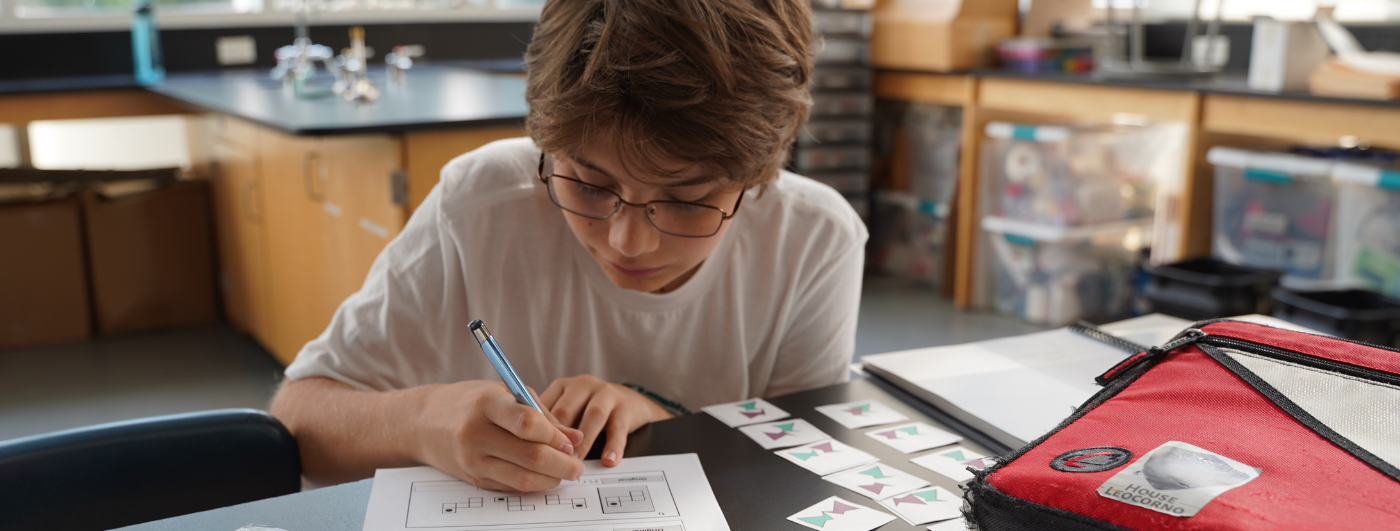
Siena Blog



The Siena School Blog
Discover, Learn, Celebrate, and Empower
Welcome to Siena's blog, your source for helpful, cutting-edge resources tailored to teachers, parents, and other advocates in the learning differences community. We are dedicated to providing a wealth of curated knowledge spanning various topics, ranging from dyslexia advocacy and awareness to classroom teaching strategies, heritage month profiles, and social and emotional health.
Discover innovative classroom strategies that inspire creativity and foster a love of learning.
Our commitment to social-emotional wellness ensures that we provide valuable insights into healthy student development and self-advocacy.
Discover resources, reading and podcast recommendations, volunteering opportunities, and more for parents in the LD community.
Our important heritage month posts highlight key people, offer reading and podcast recommendations, and more.
How Can a Small School Benefit My Child?
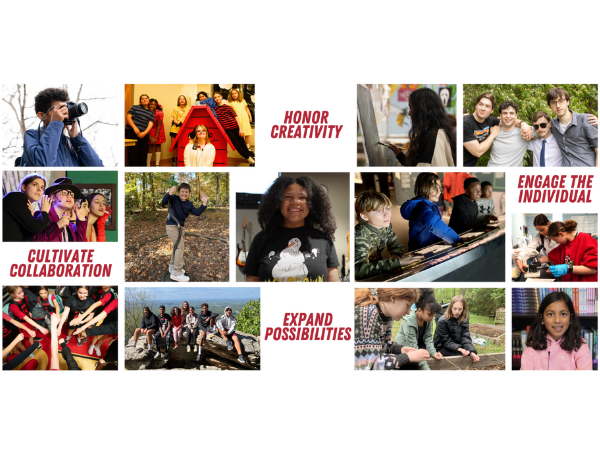
Avg. read time 5-6 min.
Small School Benefits for LD Students
On our three campuses, Siena creates an individualized learning experience for each student to create a safe, responsive, and nurturing environment that supports their academic and emotional well-being.
Families often wonder what kind of educational environment will truly help their child thrive. At Siena, we understand that every learner’s path is unique — especially for students with dyslexia and other language-based learning differences. Our intentional approach to teaching and community can benefit students with dyslexia and other language-based learning differences in several important, complementary ways. At Siena, individualized instruction and a supportive community come together to help students with dyslexia.
Learn how a student-centric, mission-focused school like Siena can make a major difference for students in the LD community from elementary to middle and then high school.
Personalized Instruction for LD Students
Siena’s close-knit educational community allows our teachers to better understand each student's strengths, growth areas, and learning needs:
- LD students benefit from teachers who know them well and can adapt to their learning styles, so Siena maintains a maximum 10:1 student-teacher ratio across all courses. This means that our dedicated, expert teachers can personally engage every student and adapt curriculum materials to meet their learning styles. Read about Siena’s dedicated faculty and staff here on our website.
- Tailored instruction and regular support helps LD students understand how they learn best, providing them with ample opportunities for specialized education and self-advocacy from elementary through middle and high school.
- Being able to focus more of their attention on individual students, Siena teachers can strike a balance between academic rigor and encouraging student independence and academic risk-taking.
Classroom Flexibility and Attention
Personalized learning and individualized attention from Siena’s faculty helps create a learning environment of collaboration, empathy, and shared respect for our students. This translates into successful student learning and academic growth in a few ways:
- Flexibility in classroom settings nurtures personalized learning plans that accommodate students’ dyslexia, neurodiversity, and other learning differences.
- Direct access to specialists in reading, assistive technology, college counseling, annual internships, accommodations, and much more is key to student success. For example, our reading team offers regular targeted reading support through multisensory structured language approaches and daily reading intervention using Orton-Gillingham methodology.
- More attention helps with ongoing communication between families, staff, and classroom teachers to share student progress, adjust strategies as needed, and more.
Community and Confidence
Siena’s connected and student-focused community supports growth and confidence, as well as provides clear social–emotional benefits:
- Schools like Siena foster close-knit relationships between students, teachers, and families, creating a strong sense of community and belonging that benefits everyone.
- Because our students are less likely to fall through the cracks or feel invisible in a small school setting, they typically feel a sense of belonging and of being valued as learners.
- Positive relationships and regular check-ins with faculty and staff can boost self-esteem, which is especially important for LD students who may have faced learning setbacks elsewhere.
Success After Graduation
Siena’s high school program at our campuses in Silver Spring, MD, and Oakton, VA, focuses on our mission and supports our high school students and families in various ways.
- Siena’s personalized learning environment — where every student is known and supported — helps create successful and independent learners who are gradually prepared for college matriculation in each year of high school and then excel in whatever path(s) they choose after graduation.
- Our regular high school curriculum emphasizes academic rigor and individualized support to best prepare our students for their next academic step.
- A key feature of Siena’s high school curriculum is our dedicated college counselor and multi-year college counseling program. In working with students in grades 9-12, our college counseling program emphasizes college readiness, offers college representative visits, and more to break down the process of applying to and then attending college. Learn more about the college counseling program here.
Across all grade levels, Siena offers a personalized, strengths-based approach where teachers know each student deeply and tailor instruction to how they learn best. This intentional structure — rooted in research, relationships, small classes and individualized support — helps students build confidence, develop independence, and discover the joy of learning.
Resources from Siena’s Blog
See The Siena School blog for more posts of interest, including Why Is Early Intervention Important?, College Prep Begins in High School, and Learning Differences and Student Confidence.
Learn Why Siena Might Be Right for Your Child
The Siena School, a national leader in dyslexia education, serves bright, college-bound students with language-based learning differences on DC Metro area campuses in Silver Spring, MD (grades 3-4 and 5-12) and Oakton, VA (grades 3-12).
Dyslexia-Friendly Book Editions
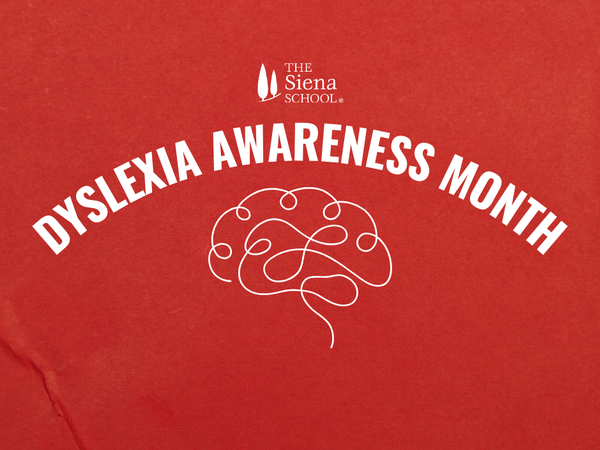
Avg. read time 3 min.
Dyslexia Awareness Month 2025
For Dyslexia Awareness Month 2025, Siena is taking the opportunity to highlight a promising new initiative from some book publishers: dyslexia-friendly editions of adult and young adult books. These offer dyslexic readers another option for print books by using certain font choices and page design elements to ease readability.
Dyslexia-Friendly Book Editions
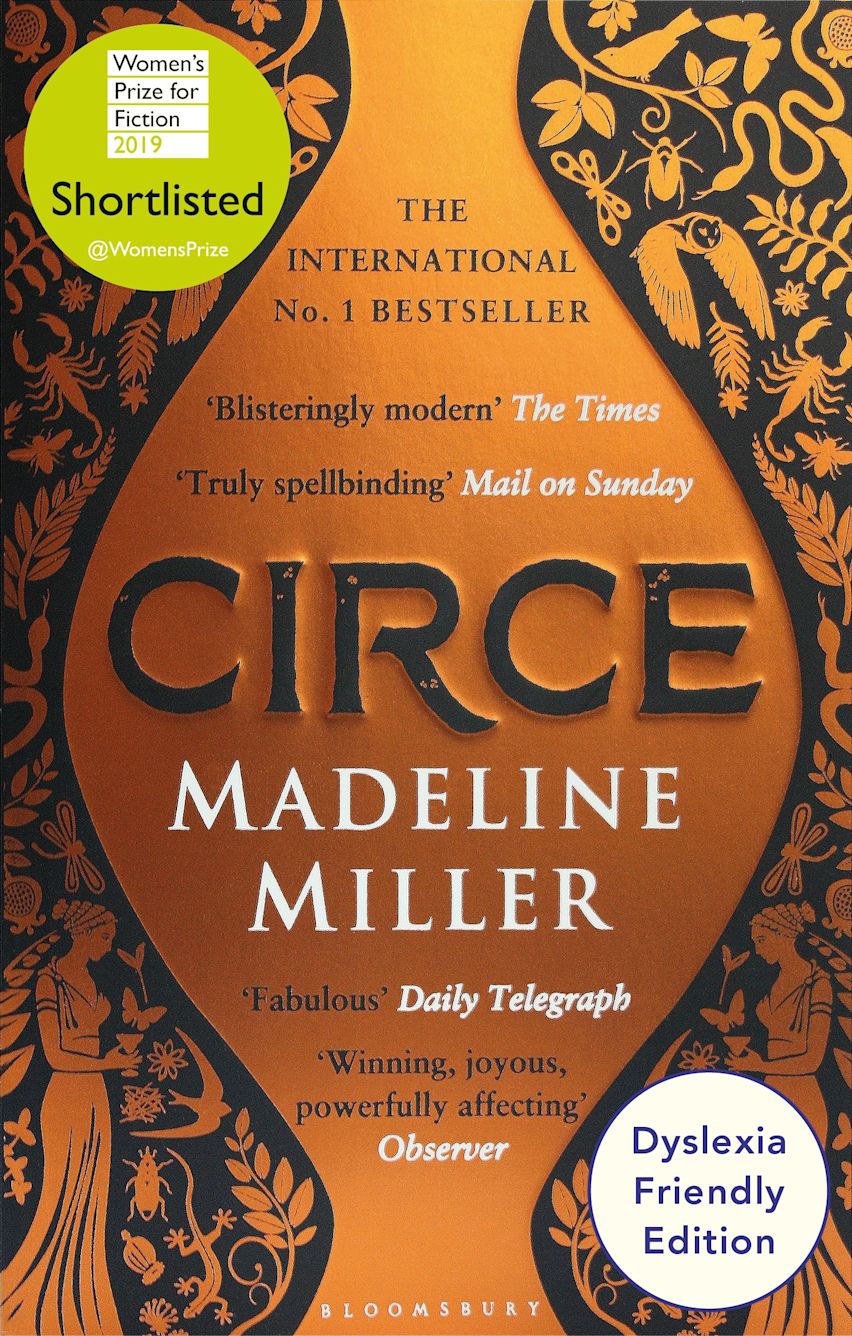
Two presses headquartered in England, Bloomsbury and Books on the Hill Press, have published several dyslexia-friendly book editions in the past few years.
Bloomsbury editions released in the past year include Circe and Song of Achilles by Madeline Miller, Piranesi by Susanna Clarke, and The Kite Runner by Khaled Hosseini. Books on the Hill Press has also offered dyslexia-friendly versions of such classics as Jane Eyre, Frankenstein, and selected Sherlock Holmes stories, among many other titles. In addition, they’ve also published versions of contemporary books by Bernard Cornwell and Garth Nix.
Jess Stevens, Rights Assistant for Bloomsbury's Adult Trade titles, shared in this short piece on their website that, as someone with severe dyslexia, she saw a need for such books and then pitched the idea to Bloomsbury in 2021:
When you’re young it’s because you don’t know the rules around reading and spelling. But as you get older, whilst those are still issues you encounter, they are joined by difficult formats, font choices and paper colour, adding to an already taxing experience.
Bloomsbury’s dyslexia-friendly editions use a sans-serif font and cream-colored paper with blue text to increase contrast and thus accessibility for dyslexic readers.
The dyslexia-friendly editions from Books on the Hill Press adopt a similar approach, using a larger, sans-serif font and generous line spacing to ease reading and processing. Books on the Hill Press was founded by Dr. Alistair Sims, who is dyslexic and co-owns and -operates a bookstore with his sister in Clevedon near Bristol, England.
“People assume that, if a book is for dyslexic adults, then it’s simplified in plot and language, but it’s not. We’re not really changing the contents, we’re changing the formatting to make it easier to read.” Learn more about Sims and Books on the Hill Press in this 2024 article from The Guardian.
There’s hope from Stevens, Sims, and others in the industry that this trend will catch on among major publishing houses to further expand availability for dyslexic readers.
Resources for Publishing Accessibility
Here are some additional resources for dyslexia-friendly reading:
- Books to Get Kids Reading (Dyslexia Help)
- Dyslexia Friendly Books for Children (Barrington Stoke Books)
- Some of these have Kindle editions with text that can be adjusted (e.g., size, font, color, margins, spacing, alignment)
- Everyone Can Be A Reader (Barnes & Noble)
- These editions use specialized fonts, paper tones, and formatting to increase readability across a wide range of age and interest levels. There is also a dedicated section and signage in Barnes & Noble stores.
- Flyleaf Publishing
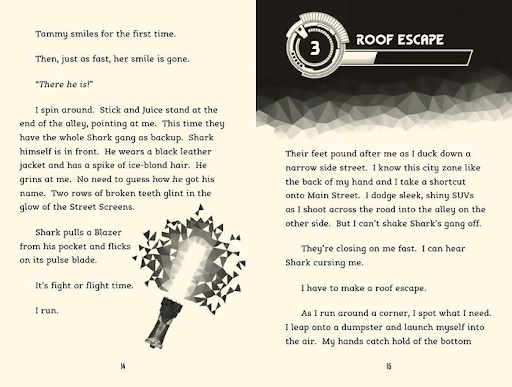
Siena Resources
Remember that Siena’s intentionality of communication for the LD community applies to our website: the LD-friendly dyslexie font can be activated by clicking on the Dyslexie icon on the top right corner (desktop) or bottom left corner (mobile) of our website.
Click here for some Helpful Resources on dyslexia, ADHD, college preparedness, and more. You can also explore our series of blog posts on Teacher Resources, Social-Emotional Health, and Cultural Heritage Spotlights.
The Siena School, a national leader in dyslexia education, serves bright, college-bound students with language-based learning differences on DC Metro area campuses in Silver Spring, MD (grades 3-4 and 5-12) and Oakton, VA (grades 3-12).
Spotlight on Zoe Saldaña

Photo Credit: Tristan Fewings/Getty Images
Avg. read time: 4 min.
Hispanic Heritage Month 2025
The theme of National Hispanic Heritage Month 2025 is Honoring the Past, Inspiring the Future.
Observed annually from September 15th to October 15th, National Hispanic Heritage Month celebrates the history and culture of the U.S. Latino and Hispanic communities. During this important month celebrating Hispanic history and culture, Siena is highlighting film and television star Zoe Saldaña for her inspiring artistic and cultural contributions as an Afro-Latino actress with dyslexia.
Zoe Saldaña’s Dyslexia
“When you have a child that has ADHD and is dyslexic and has a lot of energy and doesn’t sit still and is unable to listen, you think that it’s on purpose. I just remember asking myself, ‘Why don’t I fit in? Why do I do this?’ It would make me really sad, and it would make me feel really isolated.” —Zoe Saldaña in Harper's Bazaar
Born in northern New Jersey, Saldaña began her film and TV acting career in the late 1990s. Saldaña identifies as Afro-Latino of Puerto Rican and Dominican heritage, with Spanish as her home language. She also has Lebanese and Haitian family roots.
She is especially well known for her roles as Neytiri in the Avatar franchise, Lieutenant Uhura in the recent Star Trek films, and Gamora in the Guardians of the Galaxy trilogy and other MCU films. She’s also voiced characters in the animated films Elio and Vivo.
Saldaña has dyslexia and ADHD, which were diagnosed early in her life and led to problems in learning and remembering information. She has only recently been more public about how her learning differences and neurodiversity have affected her acting career. Saldaña has shared that she used to avoid more prominent roles that would’ve challenged her learning differences and anxiety.
Saldaña initially saw her role on the Paramount TV series Lioness as a welcome challenge, since writer Taylor Sheridan is known for dialogue-heavy scripts for such shows as Yellowstone and Mayor of Kingstown. As she reflected, “It’s very wordy. There’s a cadence to the way he wants the sort of dialogue in the scenes to be said.”
Like many in the LD community do regularly, Saldaña has adapted her learning style to her roles, such as getting her scripts well in advance or hiring a line reader to help her practice and memorize her dialogue. She told Variety Magazine in this article, “The worst thing that [Lioness writer Taylor Sheridan] can do is to change a scene last minute or add dialogue. That’s when I’m like, ‘Wait, wait, wait, that’s dyslexia 2.0’ — that will be the next step.”
Her role in the 2024 dramatic musical Emilia Pérez led to, among other accolades, both an Oscar and a Golden Globe award for Best Supporting Actress. She opened her Golden Globes acceptance speech by saying, “I know I don’t have much time. I have dyslexia, so I tend to forget when I’m really anxious.” (Watch the full speech here.)
She’s also drawn on her background as a dancer in performing her more physical roles, learning her lines, and adapting to changes. As Saldaña also shared in this Variety Magazine article, “by the time that scene [in Lioness] would come, it was an extension of who I was — like ballet. [...] The moment my brain realized that words are like a plié in a pas de deux, I was just like, ‘Ooh, a grand jeté is like a Taylor Sheridan monologue.’”
You can also watch this video on the Child Mind Institute website where Saldaña talks more about her dyslexia journey, sharing:
“Something that my older self would tell my younger self is [to] rely on those people that really believe in you and are really willing to genuinely listen to you. It does get better, but please speak up. Don’t live in silence, because who you are and what you do and what you’re going through is not wrong.”
National Hispanic Heritage Month Resources
Below are some additional resources to help commemorate Hispanic Heritage Month this year:
- View Hispanic Heritage Month Resources from the National Museum of the American Latino
- Look at These Books To Read for Latine & Hispanic Heritage Month from Penguin Random House
- Learn about the 25 Most Anticipated Books of 2025 from Latinx in Publishing
Siena Resources
Previous Heritage Month spotlights of notable people with dyslexia feature writer and activist Victor Villaseñor, artist Ignacio Gomez, and pro athletes Jewell Loyd and A’ja Wilson. Click here to see all of Siena’s Heritage Month Spotlights from previous years.
The Siena School, a national leader in dyslexia education, serves bright, college-bound students with language-based learning differences on DC Metro area campuses in Silver Spring, MD (grades 3-4 and 5-12) and Oakton, VA (grades 3-12).
Finding and Choosing a Dyslexia Tutor
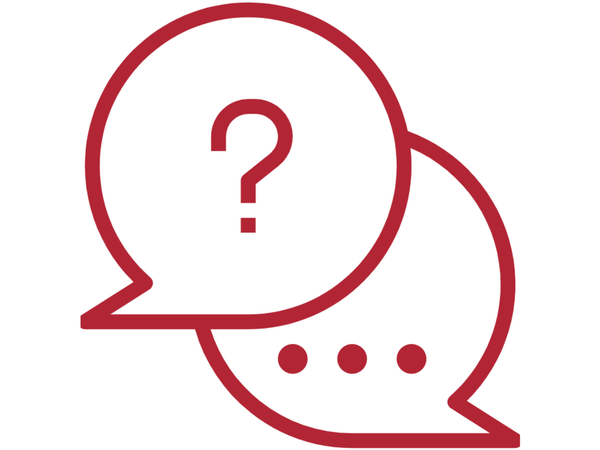
Avg. read time: 3 min.
When looking for additional educational support, it’s important to explore different tutoring options and ask the right questions to ensure the best fit for your child’s needs. Let Siena help you navigate the important process, from exploring tutoring options for your child to starting the tutoring.
Finding a Tutor for K-12 Students
For students with dyslexia and other language-based learning differences, it’s especially important to know education professionals’ training credentials and teaching methods. This will ensure that LD students benefit from working individually with experienced tutors to improve their subject-area knowledge and/or executive functioning skills.
The International Dyslexia Association (IDA) recommends that families ask about teaching and other educational work experience and specific training in LD educational methods. IDA’s website has more information about support for dyslexic students, including pieces on effective reading instruction and evaluating educational professionals.
Determining Your Child’s Needs
Before searching for a tutor, identify the specific areas where the student needs help:
- Subject-Specific Areas (e.g., math, reading, science)
- Decoding and other skills related to reading
- Study skills, executive functioning, and organization
- Specialized Support (e.g., learning disabilities, ESOL support)
- Test Prep (e.g., SAT, ACT, state exams)
Searching for a Tutor
- Ask your child’s teachers or counselor(s) if they have specific recommendations
- Reach out to a local school that specializes in your child’s area of improvement and ask if they have recommendations or resources available
- Check local community centers and libraries for tutoring programs
- Ask your social media network if they know of any tutors or tutoring services
- Use online communities Nextdoor or your neighborhood list-serv to find local tutors.
Communication and Key Questions to Ask
Here are some questions you could be asking to help find the best tutoring fit and—particularly for LD students—to determine the ideal tutoring methods and set reasonable expectations:
- What experience do they have with LD students and accommodations for neurodivergent learners (e.g., visuals, fidgets, multisensory methods, or assistive technology)?
- What training do they have in structured literacy approaches, such as Lindamood-Bell, Orton-Gillingham, and advanced phonemic awareness and morphology training?
- What experience do they have teaching the specific grade level? What are their subject areas of expertise?
- How do they adapt to the student’s learning style (visual, auditory, hands-on, etc.)? Can they provide personalized lesson plans?
- Are they available after school, during school hours or on weekends? Can they provide in-person or online sessions based on your needs?
Setting Up an Initial Consultation
These are typically short meetings in which the tutor and/or program director will share information on how the tutoring process works, their distinctive teaching methods, available tutor(s), payment structure, and so on.
For example, Siena Tutors uses this enrollment process for new tutoring services:
- Initial Inquiry Form (see here for the inquiry form)
- Initial Consultation (free)
- Educational Intake (e.g., to determine specific needs or review a diagnosis)
- Registration, Scheduling, and Payment Process
It could be helpful to schedule an additional meeting either with the director of tutoring or with the tutor to discuss key topics, such as: more in-depth sharing of the student’s educational needs, sharing of educational assessments, and/or sharing formal diagnosis.
All of this foundational work helps the tutor assess the student’s individual needs and learning style. A good program will want to ensure the best possible tutoring fit for your child and be able to provide references for the tutor.
At the beginning stages of a tutoring arrangement, it’s important to set clear goals and expectations for the sessions. Then, after every few sessions, be sure to maintain open communication with the tutor to track your child’s progress and make any necessary adjustments.
Siena Blog and Resources
For additional relevant information from The Siena School blog, see our Parents and Community category, as well as previous posts about tech detoxing for teens in school and common language in LD education.
The Siena School, a national leader in dyslexia education, serves bright, college-bound students with language-based learning differences on DC Metro area campuses in Silver Spring, MD (grades 3-4 and 5-12) and Oakton, VA (grades 3-12).
Siena Summer Reading 2024
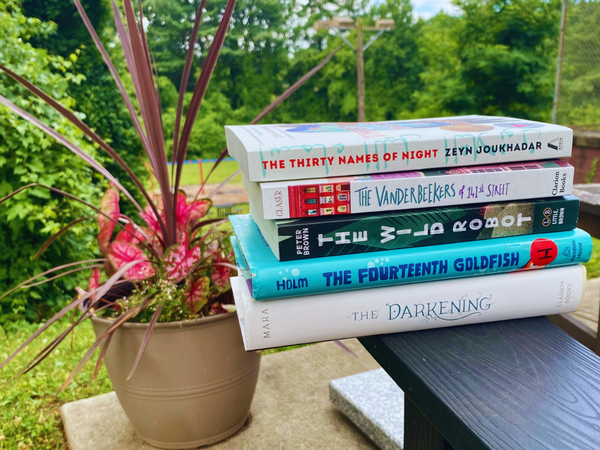
Avg. read time: 2 min.
Summer reading is important for students’ overall development, so let Siena help your student(s) find some age-appropriate books that are also interesting, relatable, and social–emotionally beneficial. For students with dyslexia and other language-based learning differences, summer reading lets them practice their decoding, retention, and fluency skills.
Summer Reading Recommendations for Teens and Tweens
At the end of each school year, Siena teachers share summer reading packets, which include recommendations and class readings for students across all grade levels. Teachers assemble reading lists to share with students, always choosing a variety of books that reflect Siena’s diverse community and curriculum. Here are some of the books Siena’s students will be reading this summer:
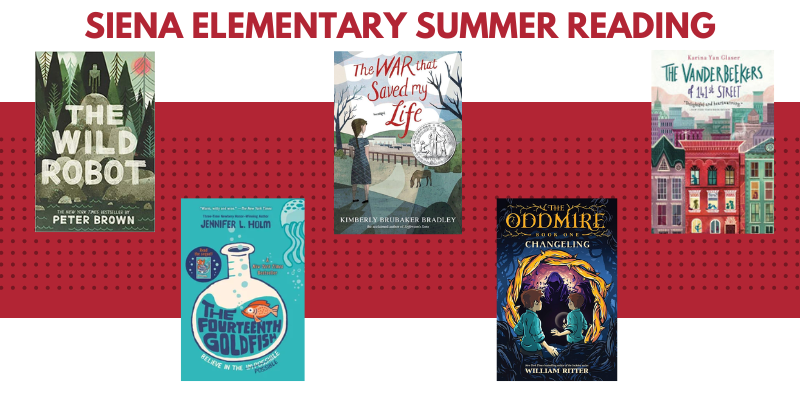
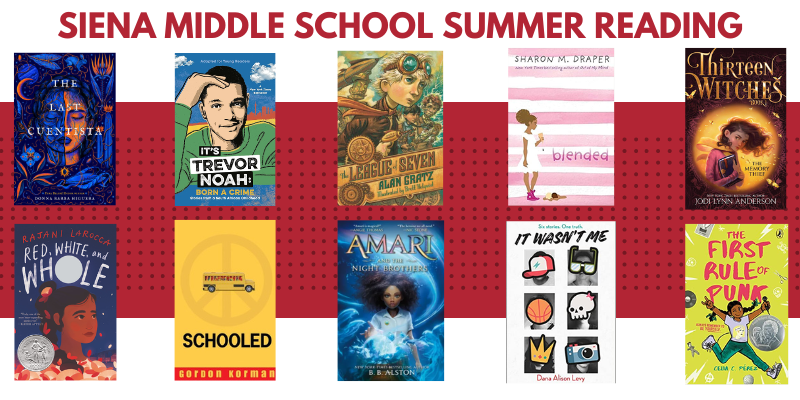
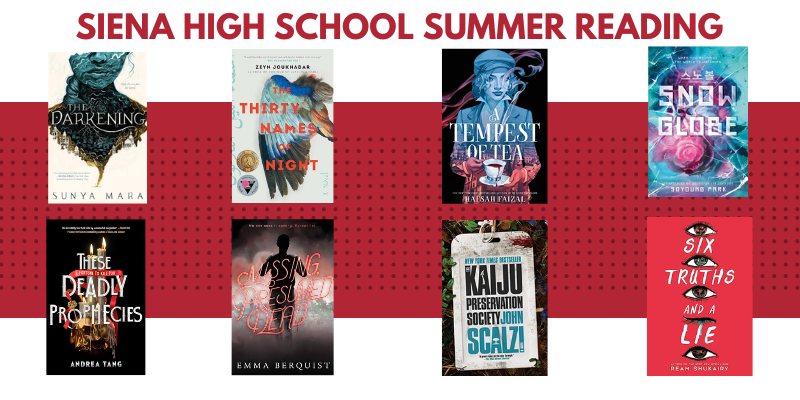
Additional Summer Reading Resources
General Resources
- Summer Reading Tips for Parents from the Learning Disabilities Association of America offers good advice to keep summer reading enjoyable.
- The National Education Association has ample resources, tips, and more for children to Get Serious About Summer Reading.
- The New York Public Library has Staff Picks for Teens and Staff Picks for Kids, including some in Spanish.
- Students who prefer to listen to books—or who perhaps want to read along while listening—should also explore the audiobook selections on Learning Ally, Audible, and AudioFile.
- Students who prefer more visual storytelling can see these 80 Best Graphic Novels for Kids.
Local Resources
- Maryland families can check the Montgomery County Public Library’s Summer Reading Challenge, which includes summer reading booklists by grade.
- Virginia families can check the Fairfax County Public Library’s Summer Reading Adventure and Recommended Reads.
- Washington, DC, families can check the DC Public Library’s Discover Summer for Kids.
- An additional option for summer reading work is Siena Tutors, which provides individual virtual instruction for students in grades 3-12. Learn more here.
Siena Resources
For more information from The Siena School blog, see previous posts about Summer Boredom Busters, successful Summer Academics and Camps, Summer Tech Skills, and Summer Reading 2022.
The Siena School, a national leader in dyslexia education, serves bright, college-bound students with language-based learning differences on DC Metro area campuses in Silver Spring, MD (grades 3-12) and Oakton, VA (grades 3-11).
Women’s History Month Spotlight: Sally Gardner and Laurie Halse Anderson
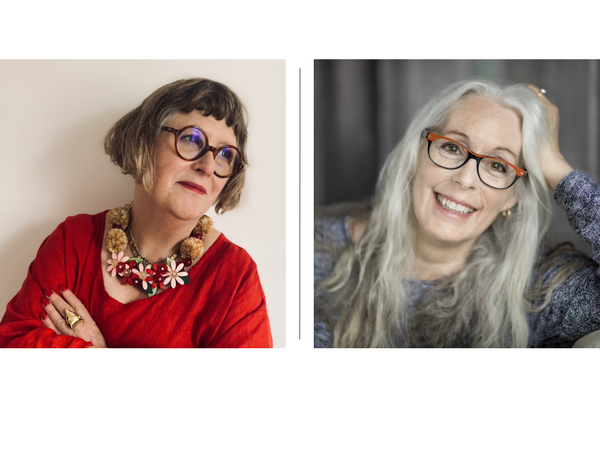
Avg. read time: 3 min.
“Women from every background have long realized that an uneven playing field will never bring equality or justice. Many feel the critical need to speak up and work harder for fairness in our institutions and social interactions.” —National Women’s History Alliance
Women Writers with Dyslexia
The theme of Women’s History Month 2024 is Women Who Advocate for Equity, Diversity, and Inclusion. Siena celebrates Sally Gardner and Laurie Halse Anderson, two writers with dyslexia whose years of work in the arts have helped tell inclusive stories about diverse topics and characters.
As the National Women’s History Alliance reminds us,
During 2024, we recognize the example of women who are committed to embracing everyone and excluding no one in our common quest for freedom and opportunity. They know that people change with the help of families, teachers, and friends and that young people in particular need to learn the value of hearing from different voices with different points of view as they grow up.
Sally Gardner
Diagnosed with a learning difference at age 11, Gardner worked for many years in theatre set design and visual arts in her native England. She then pivoted to writing in her mid-40s. Her first book was The Strongest Girl in the World (1999), and her most recent is The Weather Woman (2023). Other notable Gardner books include I, Coriander, The Door That Led to Where, The Double Shadow, and Tinder. Her books include diverse character types and frequently overlap imaginative stories and historical or fairy tale settings.
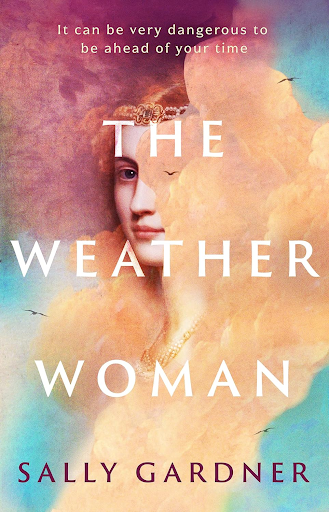
See Sally Gardner’s website for a full list of her books for young readers. She’s also a participating artist with artist and dyslexia advocate Gil Gershoni’s Dyslexic Dictionary project.
Disobedience is a part of being dyslexic. A refusal to be classified, to adhere to rules without answers. A defiance against mediocrity. To disobey is to believe in the power of imagination to alter situations. To leave those behind who tell you things must be done the same as they were always done. —Sally Gardner
Laurie Halse Anderson
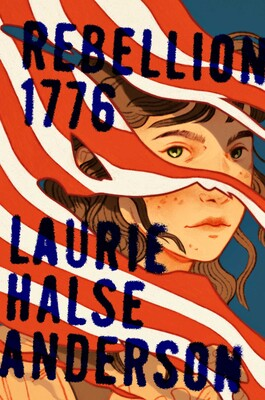
Diagnosed with dyslexia at a young age, Anderson received early intervention for reading and speech learning differences in school. To learn more about her background, see this series of short videos about her life and work from Reading Rockets, where Anderson discusses her schooling and use of haiku as her entry point into writing.
Anderson has written many picture books and young adult novels on a variety of historical and contemporary subjects, including censorship, sexual assault, and eating disorders. Her first book was Ndito Runs (1996), and her newest is Rebellion 1776 (forthcoming, October 2024). Other notable Anderson books include Chains, Shout, Speak (adapted into a movie in 2004), and The Hair of Zoe Fleefenbacher Goes to School.
See Laurie Halse Anderson's website for a full list of her young adult, historical fiction, and picture books, as well as a list of her many awards and honors. There are also educators’ guides and discussion questions for selected books.
I write about the things that teenagers have to deal with every day. Many of them have to cope with hard things, sadly. When they read books about similar experiences, they feel less alone. Those kids who are lucky enough to have wonderful, trauma-free lives can learn what it’s like to not be so lucky from my books. That helps them develop empathy and compassion. —Laurie Halse Anderson
Resources and Events for Women’s History Month
Here are some resources and local events commemorating Women’s History Month 2024:
- Women's History Month, American Women Writers—and Readers, Smithsonian American Women’s History Museum (includes information about their inaugural digital exhibition)
- Women’s History Month Events in Washington, DC
- Women's History Month Events | University of Maryland
- National Women's History Museum news, events, and resources
- On Sunday, March 3, the Military Women's Memorial is kicking off the month with a musical performance and program featuring the U.S. Army Band's chamber players.
Siena Resources
The Siena School blog has other Heritage Month spotlights related to innovative dyslexia education, including WNBA stars A’Ja Wilson and Jewell Loyd and Olympian Meryl Davis for past Women’s History Month posts.
See also our blog posts on Native American book recommendations, Mexican writer and activist Victor Villaseñor, Chicano artist Ignacio Gomez, and NFL star Rashan Gary, and others. Learn more about Siena’s commitments and ongoing initiatives for Diversity, Equity, Inclusion, and Belonging.
The Siena School, a national leader in dyslexia education, serves bright, college-bound students with language-based learning differences on campuses in Silver Spring, MD (grades 3-12) and Oakton, VA (grades 3-11).
Dyslexia Reading and Podcast Recommendations
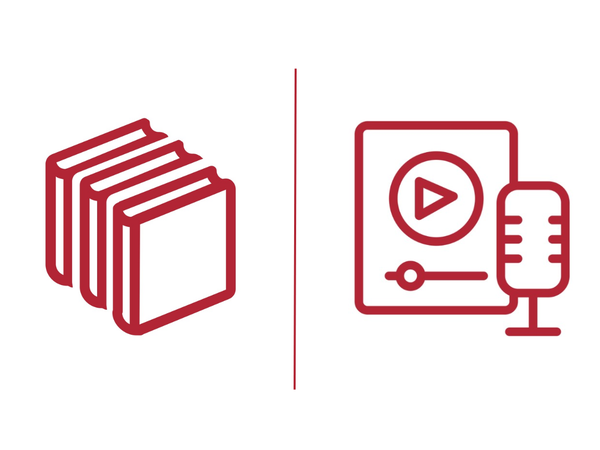
Avg. read time: 2 min.
As part of Dyslexia Awareness Month 2023, Siena has put together this short guide of books and podcasts that can help families in the LD community navigate their children’s specialized learning and social–emotional needs.
Book Recommendations for Dyslexia Awareness Month
- Adventures of Everyday Geniuses series
- Fish in a Tree by Lynda Mullaly Hunt
- Gifted and Distractible by Julie Skolnick
- Make it Stick by Peter C. Brown, Henry L. Roediger III, and Mark A. McDaniel
- Overcoming Dyslexia by Dr. Sally Shaywitz
- The Dyslexic Advantage by Drs. Fernette and Brock Eide
- The Knowledge Gap by Natalie Wexler
See also Siena’s in-house parent resource library list, The Literacy Nest, National Education Association, and Yale Center for Dyslexia and Creativity for more reading recommendations.
Podcast Recommendations for Dyslexia Awareness Month
See The Siena School blog for these related resources for LD families:
- Black and Dyslexic
- Fish Don't Climb Trees
- Lessons in Dyslexic Thinking (Made By Dyslexia)
- Dyslexia Coffee Talk (The Dyslexia Initiative)
- Tell Me This episode featuring Siena’s Dr. Jilly Darefsky
- The Invisible Gift
- The Science of Reading episode featuring Dr. Sally Shaywitz
- The Truth About Dyslexia
Blog Post Recommendations for Dyslexia Awareness Month
See The Siena School blog for these related resources for LD families:
- Common Acronyms in LD Education
- Podcasts for Every Interest
- Summer Reading At Siena
- Winter Break Podcast Recommendations
- Winter Break Reading at Siena
The Siena School proudly serves students with dyslexia and other language-based learning differences in grades 3-12 on campuses in Silver Spring, Maryland, and Oakton, Virginia.
Common Acronyms in LD Education: Understanding the Language
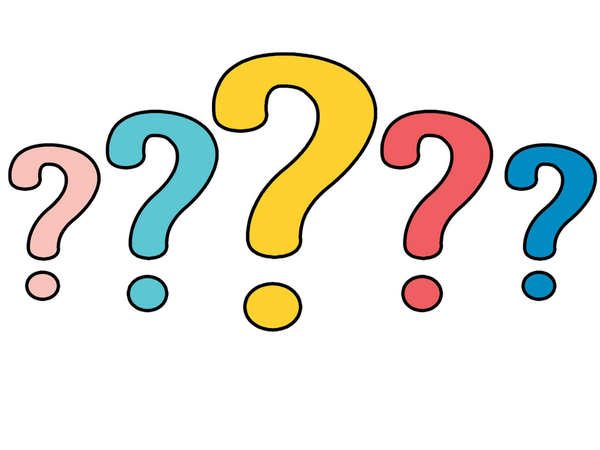
Avg. read time: 3 min.
Every professional field has its own lingo, and special education is no exception. As part of Dyslexia Awareness Month 2023, Siena is pleased to offer a short, useful guide to terms that parents will read and hear often as they navigate their child’s education.
Terms such as LD (Learning Differences), IEP (Individualized Education Program), LBLD (Language-Based Learning Differences), and SLD (Specific Learning Disability/Disorder) are common. Parents could hear these often when first connecting with an admissions representative or learning specialist, as well as when going through testing, the IEP process, and discussions with friends and neighbors..
Parents new to the LD community might be wondering about understanding the process and language around an LD diagnosis as they take the appropriate next steps.
Common Terms in the LD Community
Acronyms in the LD community are a useful shorthand for frequently used terms that are integral to the process. This helps make conversations more fluid and understandable during key times, such as:
- neuropsychological evaluation,
- IEP consultation,
- meeting with teachers or administrators
- school admissions materials, and
- discovery call or tour with an admissions team member.
Parents might talk with various specialists, school administrators, advocates, and so on, and having a shared language means having a shared understanding during such an important time. Here are some commonly used acronyms in LD education:
Testing and Diagnosis
Twice Exceptional | |
504 Individual Education Plan | |
ADHD | Attention Deficit/Hyperactivity Disorder |
Auditory Processing Disorder | |
Children and Adults with Attention-Deficit/Hyperactivity Disorder | |
EF | Executive Functioning |
GT/LD | Gifted and Talented/Learning Difference |
LBLD | Language-Based Learning Differences |
Orton-Gillingham reading method | |
OHI | Other Health Impaired |
Multisensory Math | |
SLD | Specific Learning Disability |
SLI | Speech-Language Impairment |
SLP | Speech Language Pathologist or Structured Literacy Program |
Wechsler Individual Achievement Test | |
Wechsler Intelligence Scale for Children | |
Woodcock-Johnson Psychoeducational Battery |
Accommodations and Supports
AT | Assistive Technology |
DC Capital Area Branch of the International Dyslexia Association | |
ESY | Extended School Year Services |
International Dyslexia Association | |
Individualized Education Program | |
Learning Disabilities Association | |
OT | Occupational Therapy |
Washington Independent Services for Educational Resources |
Dyslexia Resources for Families
- Frequently Used Acronyms in Education — Great Schools
- Common Acronyms For Special Education — Plainfield (IN) Community School
- EDFacts Acronym List (downloadable PDF) — US Department of Education
- Parent Resource Center — Weinfeld Education Group
Families in the LD community can also visit Siena’s resources page, student profile, and glossary of terms for additional help. The Siena blog has several posts for parents and community, including ones about the importance of early dyslexia diagnosis and intervention and building confidence in LD students.
The Siena School, a national leader in dyslexia education, serves bright, college-bound students with language-based learning differences on campuses in Silver Spring, MD (grades 3-12) and Oakton, VA (grades 3-11).
Why Is Early Intervention Important?
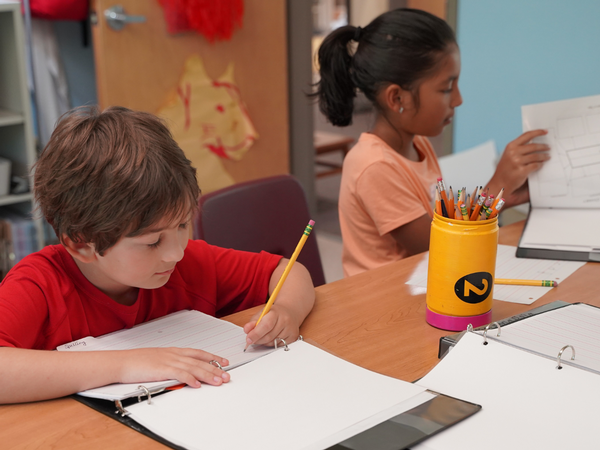
Avg. read time: 3 min.
Early Intervention for Learning Differences
When understanding students’ learning differences, the earlier a diagnosis comes, the better. There can be a lot to think about and research, so let Siena help you get started with the process of understanding why it’s crucial to address dyslexia, dysgraphia, and other language-based learning differences as soon as possible in a child’s life.
Ultimately, early adaptation and accommodation can lead to early attention for students who need it.
Learning Differences, Early Intervention, and Self-Confidence
If a specific LD diagnosis comes in a student’s early elementary years, for instance, then the ideal time to start finding a specialized program or school is right then. Early identification of dyslexia or another language-based learning difference helps families identify their students’ specialized learning needs and begin adopting strategies for success. According to the National Center for Learning Disabilities,
In young children, brain networks for information processing are still being formed, which means that early experiences, and interventions, can have a greater impact on students when they are young. Early screening can result in children receiving extra help sooner and prevent them from falling behind.
Early academic support typically accompanies early social-emotional awareness and self-confidence. As this Child Mind Institute blog post stresses,
[W]orking with children with learning disabilities should be as much about addressing self-concept and self-confidence as it is academics and learning strategies.
Assuming you have gotten your child an evaluation, seen that a plan of support and remediation has been set up for them at school, and checked in regularly to ensure it’s being implemented, you can focus on helping bolster their confidence both in and out of the classroom.
As specific learning needs are identified at kindergarten or early elementary ages, students will begin gaining the self-confidence, structure, and learning strategies that will carry them through their educational journeys.
Recognizing the importance of early diagnosis and prompted by the success of 3rd grade at Siena Northern Virginia, Siena will be adding a satellite campus in Silver Spring for grades 3-4 beginning with the 2024-25 school year. With this upcoming addition of Grade 3 as an option for families, Siena will continue to refine its students’ elementary experience with necessary early intervention, lessons in self-advocacy, and multisensory reading techniques.
“The earlier we can intervene and provide students with an appropriate and welcoming learning environment,” Siena Silver Spring Head of School Katie Douglas adds, “the more time they will have to let their passions and talents shine.”
Resources for Early Dyslexia Intervention
There are ample resources for families seeking early diagnosis and intervention for children with learning differences:
Recognizing and Diagnosing Learning Differences
- Early Signs of Learning Challenges and How To Help Kids With LD Build Confidence (Child Mind Institute)
- Early Childhood Intervention Makes a Difference (LDA)
- It Took Me Too Long to Decode My Daughter’s Dyslexia and Who Can Diagnose LD and/or ADHD (Reading Rockets)
- How to Recognize Signs of Potential Learning Disabilities in Preschool (Edutopia)
- What to Do If Your Child is Falling Behind in School and Learning Disabilities & Differences: What Parents Need To Know (Healthy Children from the American Academy of Pediatrics)
- The LD Checklist: Recognize and Respond and Why Early Screening (National Center for Learning Disabilities)
- Why is Early Intervention So Important for Kids with Dyslexia? (National Center on Improving Literacy)
National and Local Organizations
- Atlantic Seaboard Dyslexia Education Center
- International Dyslexia Association
- National Center for Learning Disabilities
- Learning Disabilities Association of Virginia
- Learning Disabilities Association of Montgomery County
See also Siena’s Resources page for additional organizations and links regarding dyslexia, ADHD, parent support, and much more. School counselor Haley Scranton wrote a blog post on confidence and learning differences as part of Mental Health Awareness Month 2023.
Overall, early diagnosis of dyslexia or another language-based learning difference can put students on a path to a supportive learning environment that meets their academic, social–emotional, and self-esteem needs.
Siena’s mission-focused innovative dyslexia education is designed for students in grades 3-12 with language-based learning differences on campuses in Silver Spring, Maryland, and Oakton, Virginia.
Ignacio Gomez: Chicano Visual Artist and Muralist
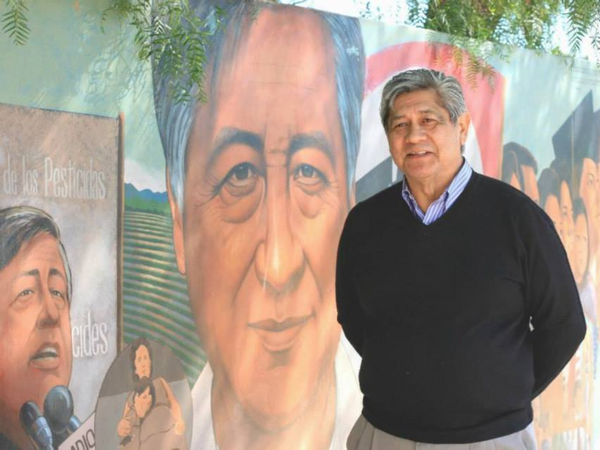
Avg. read time: 2 min.
“When I was growing up there wasn't much literature or contemporary art images that reflected us. I hope that other Chicanos and Latinos surround themselves with a positive circle of friends and associates. Our peers can help us succeed in life.” —Ignacio Gomez
National Hispanic Heritage Month 2023
One of the themes for National Hispanic Heritage Month 2023 is Building Prosperous and Healthy Communities. For decades, Ignacio Gomez—a Chicano artist and muralist with dyslexia—has used his art on behalf of his culture and community. Siena celebrates Gomez for his dedication to positive representation of Chicano and Latino culture in his paintings, murals, and much more.
“I want Mexican American and Latino kids to continue the journey of learning throughout their lives,” Gomez reflected about the larger cultural influence of his art. “We are a people who love life, art, music, our families and our cultural identity.”
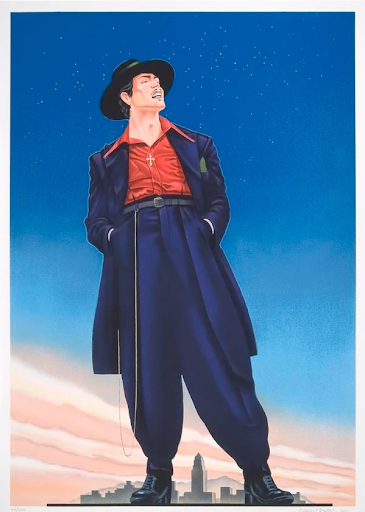
A Chicano Artist with Dyslexia
Born in Boyle Heights, California in 1941, Ignacio Gomez has had a long and important career as an artist and muralist. Gomez had early success in 1978 with his painting of the character El Pachuco, which was used as the poster for the first Chicano play on Broadway, Zoot Suit by Luis Valdez.
In a short autobiographical piece from 2002, Gomez talked about his early career doing technical illustrations, time in the Army Reserves, and education at Los Angeles Technical College and Art Center College of Design in Pasadena. “My uncle and my older brother were painters,” Gomez continued. “I was fortunate to have them as my art mentors. They showed me different murals of Diego Rivera and paintings of El Greco from Spain, and Norman Rockwell art.”
Some of Gomez’s famous recent works include the Cesar Chavez Memorial in San Fernando, California, honoring the late Chicano labor leader and founder of the United Farm Workers. As he reflected, “I hope [the Chavez Memorial] has the same impact on the new generations that Cesar had on us and that they learn about the struggles he fought for.”
Gomez also designed the statues for Mendez Tribute Monument Park in Westminster, CA, which opened in 2022. The monument commemorates the landmark Mendez v. Westminster civil rights case of 1947 about school segregation.
Earlier in 2023, Gomez’s work was part of the Estampas de la Raza exhibition of Mexican and Latino art at the Delaware Art Museum.
National Hispanic Heritage Month Resources
- See this alumni profile of Gomez from the Art Center in Pasadena, California.
- Visit the Mexican American Art archive to see a handful of Gomez’s works online, including a drawing of Chicano civil rights leader and cofounder of the National Farm Workers Association Dolores Huerta.
- Learn about the historical importance of Cesar Chavez, particularly his creation of the United Farm Workers of America and decades of labor activism and advocacy.
- Read this short overview of the historical and cultural importance of zoot suits as the background for Gomez’s famous painting for the 1978 play.
- See the National Museum of the American Latino website for updates and media coverage, and visit the Molina Family Latino Gallery at the National Museum of American History in Washington, DC.
- Explore Hispanic Heritage Month Resources from the National Museum of the American Latino and U.S. Department of Education.
Siena Resources
The Siena School blog has other heritage month spotlights related to innovative dyslexia education, including Mexican writer and activist Victor Villaseñor, WNBA stars A’Ja Wilson and Jewell Loyd, NFL star Rashan Gary, poet Amanda Gorman, and others. Learn more about Siena’s commitments and ongoing initiatives for Diversity, Equity, Inclusion, and Belonging.
The Siena School proudly serves students with dyslexia and other language-based learning differences in grades 3-12 on campuses in Silver Spring, Maryland, and Oakton, Virginia.
Spotlight on WNBA Dyslexia Advocacy: A’ja Wilson and Jewell Loyd

Avg. read time: 3 min.
Women’s History Month 2023
To commemorate Women’s History Month 2023, Siena is honoring WNBA stars Jewell Loyd and A’ja Wilson for their work and advocacy related to dyslexia.
The National Women’s History Alliance chose the theme of Women’s History Month 2023 as Celebrating Women Who Tell Our Stories, highlighting those “who have been active in all forms of media and storytelling including print, radio, TV, stage, screen, blogs, podcasts, news, and social media.” In telling their stories of dyslexia and advocacy off the court, Loyd and Wilson have worked for causes related to education, learning differences, girls’ and women’s basketball, and more.
WNBA Dyslexia Advocacy
Loyd’s and Wilson’s career paths have been quite parallel: both have played in NCAA Women’s Championship games, both were #1 overall WNBA draft picks, and both were Rookies of the Year (Loyd in 2015, Wilson in 2018). Between them, they have 3 WNBA championships (Loyd in 2018 and 2020, Wilson in 2022). They’ve also been teammates several times, winning gold at the 2020 Tokyo Olympics and at the FIBA Women's Basketball World Cup in 2018 and 2022.
A guard for the Seattle Storm since she was drafted first overall in 2015, Jewell Loyd has done a lot of strong advocacy and community work stemming from her learning differences. In 2015 right before the WNBA draft, Loyd wrote about her dyslexia journey for The Players' Tribune:
After being diagnosed [as an adolescent], it took time to figure out what worked for me, but I did. And if I close my eyes right now, I can see the back of my future jersey: Loyd. I won’t know what the front will say for another few hours, but the title I want to carry above all others? Role model.
Basketball was, for Loyd, a “sanctuary” while she was in school, and she applied the same determination and focus she needed on the court to her studies and adjustment to her learning needs.
Loyd’s dyslexia advocacy and role modeling were writ large—literally—in 2016. She was featured in an interactive, three-panel billboard in New York as an Honorary Diplomat for Eye to Eye, a nonprofit mentoring program in which elementary and middle school students with learning differences work with high school or college students with learning differences.
See the video of the billboard here.
During Women’s History Month 2022, Loyd partnered with 94 Feet of Game and We The Best Foundation for the Future of Basketball Is Female campaign, helping provide 1,000 scholarships for female basketball players, along with access to foundational basketball skills.
A fellow WNBA role model and dyslexia advocate, A’ja Wilson has been a forward for the Las Vegas Aces since being drafted in 2018. She wrote about her dyslexia journey for The Players’ Tribune in 2018, sharing that she actively sought accommodations when starting at the University of South Carolina:
Before school started I sat down with my parents and an academic advisor from South Carolina, and we decided that every professor should know about my dyslexia.
I never had to just go up to Coach [Dawn Staley] and tell her. But she knew, even before the recruiting process had ended. Freshman year, it was kept pretty quiet. I was doing all right in college thanks to having better resources—and honestly being able to record lectures instead of having to write everything down. That helped a lot.
Wilson later cofounded the A’ja Wilson Foundation with her parents. Through her foundation and public presence as a WNBA star, Wilson supports children with dyslexia and their families to, according to their mission statement, “empower them to reach their full potential through educational programming, workshops, camps and grant opportunities.”
Moreover, the A’ja Wilson Foundation does a lot of work to prevent bullying of students who learn differently through education and mentoring programs. Learn more about the A’Ja Wilson Foundation’s recent work on their Twitter, Instagram, and Facebook channels, especially under the hashtags #SpeakUp, #ChooseKindness, #DyslexiaAwareness, and #PowerToEmpower.
In using their public visibility as professional athletes and role models, Loyd and Wilson continue to advocate for dyslexia awareness and support to help students across the country.
Additional Links and Resources
Learn more about them here:
- “Jewell Loyd Talks about the WNBA Draft, Being Dyslexic and Finding Comfort in Basketball” (SB Nation, 2015)
- “Niles West Product and WNBA Champion Jewell Loyd Never Let Dyslexia Define Her” (Chicago Sun-Times, 2019)
- “The Incomparable Journey of Jewell Loyd” (Sports Illustrated, 2020)
- “How Jewell Loyd is Giving Back to Chicago and Inspiring the Next Generation of Female Hoopers” (Slam, 2022)
- “How Team USA's A'ja Wilson is Using Her Own Life Experiences to Support Others in Similar Situations” (IOC, 2021)
- “South Carolina’s A’ja Wilson Opens Up About Her Struggle with Dyslexia” (Slam, 2018)
See The Siena School blog for other heritage month spotlights related to our innovative dyslexia education, including NFL linebacker Rashan Gary, writer and activist Victor Villaseñor, poet Amanda Gorman, figure skater Meryl Davis, film director Ann Hu, and astrophysicist Dr. Maggie Aderin-Pocock. See also this 2021 blog post on dyslexia awareness and advocacy at Siena.
Siena’s mission-focused innovative dyslexia education is designed for students in grades 3-12 with language-based learning differences on campuses in Silver Spring, Maryland, and Oakton, Virginia.
Spotlight on the NFL's Rashan Gary
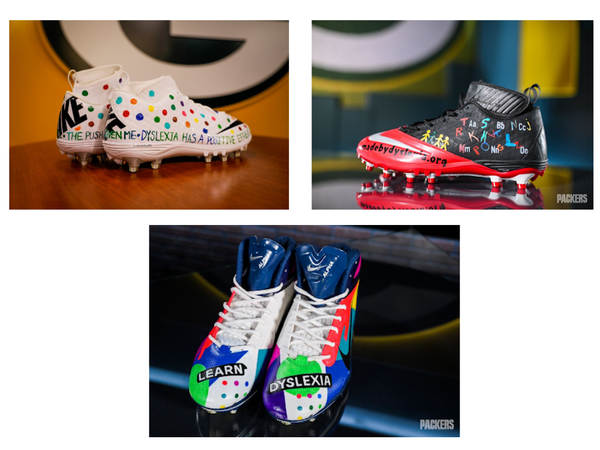
Avg. read time: 3 min.
“I teamed up with Made By Dyslexia to advocate for those who think differently.” —Rashan Gary
Black History Month 2023
To commemorate Black History Month 2023 and the importance of strong advocacy and raising awareness of what dyslexia is, Siena is honoring Green Bay Packers linebacker Rashan Gary for his dedicated dyslexia advocacy.
Gary was born in northern New Jersey in 1997 and attended college at the University of Michigan from 2016 to 2018. He was diagnosed with dyslexia in middle school, sharing in 2021 that “it’s not going to affect me because it’s my superpower. So that’s why I challenge anybody with dyslexia to keep pushing forward and keep chipping away.”
Gary regularly uses his platform as a professional athlete to be the kind of role model he didn’t have growing up. He’s strongly dedicated to “raising awareness about dyslexia and advocating for educator awareness and the critical screening resources are important to me,” as he shared in a recent Instagram post.
Rashan Gary’s Dyslexia Advocacy
Since 2020, Gary has used the NFL’s My Cause My Cleats program to raise awareness for Made By Dyslexia. As the NFL shared in this press release, “Players combine forces with artists and cleat manufacturers each year to create these custom-designed cleats that showcase their causes in a way that resonates personally to the player, their fans and the cause.”
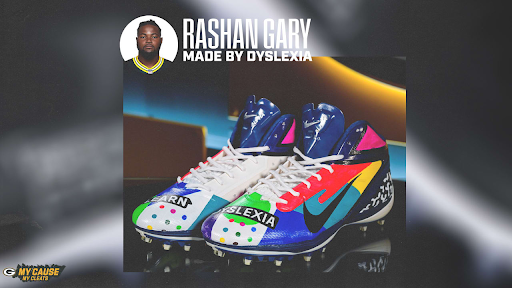
My Cause My Cleats enables players to support causes important to them through one-of-a-kind, hand-painted cleats to wear in a regular season game on a particular week. The cleats are later auctioned off for charity.
Laura Haas, who designed Gary’s cleats for 2022, shared that her own neurodivergent thinking is “kind of my superpower,” and she wanted to highlight “joy and individuality” in her design. (See here for the Instagram post.) Gary’s cleats from 2020 and 2021 likewise highlighted how his dyslexia is a strength for him, as well as how the dyslexic brain might see and process information.
- Watch the NFL’s 2022 ad featuring Rashan Gary here.
- See here for a photo gallery of Gary’s 2022 cleats.
- See here for Gary’s video from 2021 about his cleats.
Additional Links and Resources
Gary has been a visible public figure since he was a nationally recognized high school football player. He understands how important it is to use his platform to advocate for dyslexia awareness and support. Gary has also worked with the Michigan Dyslexia Institute to talk about his journey and inspire others to see superpowers, creativity, and perseverance within themselves.

Other NFL players with dyslexia have raised awareness through My Cause My Cleats, such as Spencer Drango of the Cleveland Browns, Lawrence Guy of the New England Patriots, and Max Scharping of the Cincinnati Bengals.
The Siena School blog has other heritage month spotlights related to innovative dyslexia education, including writer and activist Victor Villaseñor, poet Amanda Gorman, figure skater Meryl Davis, film director Ann Hu, and astrophysicist Dr. Maggie Aderin-Pocock. See also this 2021 blog post on dyslexia awareness and advocacy at Siena.
Learn more about Siena’s commitments and ongoing initiatives for Diversity, Equity, Inclusion, and Belonging.
The Siena School proudly serves students with dyslexia and other language-based learning differences in grades 3-12 on campuses in Silver Spring, Maryland, and Oakton, Virginia.
“Be the BEST version of you that you can be. No one will ever do it better. We have dyslexia, and we can accomplish ANYTHING we put our minds to.” —Rashan Gary
Authentic Assessments and Project-Based Learning at Siena
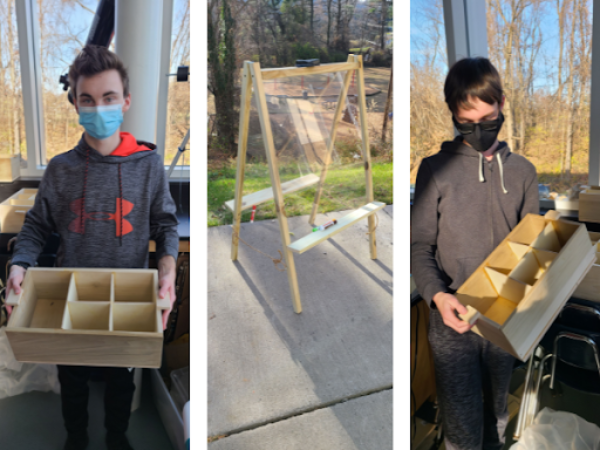
Avg. read time: 3 min.
What Is Authentic Assessment and Project-Based Learning?
With schools starting up, teachers might be looking to use new measures of student learning that are engaging and meaningful. Accurate assessment methods are especially important for students with dyslexia: they typically do better with multi-step projects that involve ample communication, collaboration, and creativity and that aren’t writing-centric.
Such project-based student learning overlaps with authentic assessment, a term coined in the 1980s by the late educational researcher Grant Wiggins. Wiggins insisted that an authentic task should be worth redoing—not just for rote memorization or a better grade, but for a better understanding. Authentic assessments typically involve four key areas:
- Engagement
- Meaningful Feedback
- Diverse Learning Objectives
- Interdisciplinarity
Project-based learning is increasingly common in K-12 schools for teachers as a way for “students [to] learn content and skills while working collaboratively, thinking critically and often revising their work” over multiple weeks, as this U.S. News & World Report article notes. This approach connects students to the tasks and challenges they might eventually see in Humanities, STEM, and other fields.
Authentic Assessment and Project-Based Learning at Siena
As Siena’s Director of Technology Simon Kanter notes, “We’re always assessing a variety of skills, not just content knowledge, in our classes.” While students write some content for their summative projects, writing isn’t the centerpiece of such work. This approach is especially effective for our students because it both allows them to showcase their skills in ways that make the most sense to them and plays to their many strengths.
Here are some examples of authentic assessments at Siena:
- When discussing energy in middle school science, Jennifer Chambers presents her students with a real-world challenge to design, build, and test a roller coaster that works using a minimal amount of fossil fuel energy. After weeks of testing and collaborating, students then pitch their project to an imaginary CEO.
- Kristian Whipple’s high school visual arts students take the school photos each year on Picture Day, fitting their class work and photographic talents directly into the real-world production of our yearbook photos and other visual content.
- Nick Franson’s high school engineering students recently made outdoor easels and organizer boxes for a local nature preschool as a way to apply their knowledge of woodworking and engineering techniques and to provide a usable product. Franson’s students have also made set pieces for Siena’s theater department performances as part of the engineering curriculum.
Last school year, Middle School Dean of Students and Director of Student Life Megan Noyes had students create an amusement park based on their study of ancient civilizations in her social studies classes. Noyes assessed students on their content knowledge and ability to connect each attraction to ancient history, their presentation, and their creativity. Students used their artistic skills, science and reasoning skills, and writing skills to put together engaging, multisensory presentations.
After completing the project, they presented their amusement park to the class as if they were in a commercial. Some of the attractions included a ride called Artemis’s Aim where riders would shoot a bow and arrow at targets, Bath House Bistro where people ate in a jacuzzi like they were in a Roman bath house, and a ride called Fertile Crescent Water fight where riders have a water gun fight with the water from the banks of the Tigris and Euphrates rivers. Students also designed maps of their parks’ attractions. Students demonstrated their depth of knowledge about ancient civilizations throughout their presentations.
For Noyes, “This project was a great way for students to demonstrate the overall knowledge of ancient history that they learned over the year, apply it by using higher-order thinking to connect it to a real world theme, and get to have fun as well.”
Resources for Authentic Assessment and Project-Based Learning
Across all divisions, Siena teachers design their projects to enable students to do what they’ve always been doing in a class, while also showcasing their strong analytical and creative skills. Siena’s Simon Kanter sums it up: “Since we’re strongly student-centered, we enable the students to learn and be assessed in the ways that work best for them. We value assessments that are engaging to our students and more meaningful to everyone involved, as well as those that match our multisensory teaching methods.”
See here for some additional materials and resources for authentic assessment:
- Edutopia has several pieces on authentic assessments and project-based learning;
- Boston University’s Project-Based Learning: Teaching Guide and Ask a Tech Teacher’s 7 Authentic Assessment Tools have numerous ideas for teachers; and,
- Indiana University Bloomington has a helpful overview of authentic assessment in its teacher resources, including a grid distinguishing typical tasks, authentic tasks, and indicators of authenticity.
The Siena School blog has ample material about Siena’s teaching methods and learning objectives, including multisensory math in our classrooms and dyslexia advocacy and accommodations for our students.
The Siena School proudly serves students with dyslexia and other language-based learning differences in grades 3-12 on campuses in Silver Spring, Maryland, and Oakton, Virginia.
Spotlight on Victor Villaseñor

Avg. read time: 3 min.
“I wanted my children to see examples of real Mexican heroes, since I grew up thinking Mexicans could only wash dishes and work in the fields.” —Victor Villaseñor, on his book Rain of Gold
National Hispanic Heritage Month 2022
As part of National Hispanic Heritage Month this year, Siena is honoring Victor Villaseñor for his decades of successful work as a writer, speaker, and activist with dyslexia.
The National Council of Hispanic Employment Program Managers (NCHEPM) chose Unidos: Inclusivity for a Stronger Nation as the theme for National Hispanic Heritage Month 2022. Since 1988, National Hispanic Heritage Month has spanned September 15–October 15 each year. The September 15 start date coincides with the independence day anniversaries for several Latin American countries, including Chile, Honduras, Mexico, and Costa Rica.
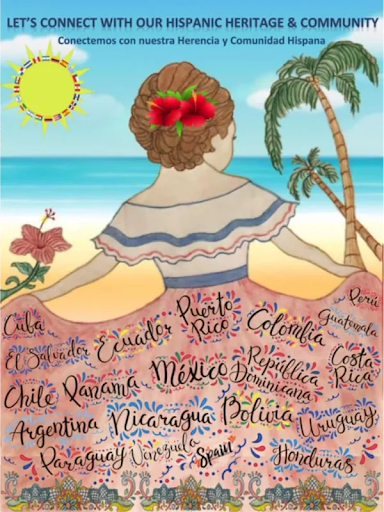
A Latin Writer with Dyslexia
Born in Carlsbad, California, in 1940, Villaseñor has been a prolific author of fiction, nonfiction, and children’s works since publishing his first books, Macho! and Rain of Gold, in 1991.
Perhaps unusually, Villaseñor was an avid reader and writer well into adulthood before he realized he’s dyslexic.
Villaseñor was diagnosed with dyslexia in his mid-40s, when his sons were also being tested. As he remembers his conversation with the learning specialist who diagnosed his sons and him,
“Do you see rivers between the words?” she asked.
“All the time,” I said. “I look at a page and I have to take a big breath to stop the rivers from coming down the page between the words from the left up high to the right down low. And you mean other people don’t see these rivers moving on the page?”
She shook her head, “No, they don’t. Oh, I’ve never had someone so far off the charts. It’s incredible, it’s a miracle that you ever learned to speak or read. And to write, to become a professional writer, is beyond my comprehension. How did you do it?”
I couldn’t talk anymore. Finally somebody understood what I’d gone through to become a writer.
Since then, Villaseñor has published numerous other books, including the memoirs Burro Genius and Crazy Loco Love and Mexican folktales for children such as The Stranger and the Red Rooster and Goodnight, Papito Dios. (See here for his bibliography.)
In addition to his prolific writing and public speaking, Villaseñor has also done a lot of advocacy and community building through such efforts as Snow Goose Global Thanksgiving, an annual music festival with shared food that takes place on the Sunday before Thanksgiving. Villaseñor also runs workshops for teacher training, Indigenous history, and biographical/autobiographical writing.
For more information about Villaseñor, see these videos on his website, as well as this profile from the Yale Center for Dyslexia & Creativity.
What makes me a special kind of author and public speaker is that I didn’t learn how to read until the age of 20. And because of that, I didn’t get educated into Western civilization and so I was able to retain my grandmother’s Indigenous Native American Sacred Knowledge. —Victor Villaseñor
National Hispanic Heritage Month Resources
There are ample online resources to learn more about National Hispanic Heritage Month and upcoming events and exhibitions commemorating it:
- Learn more here about National Hispanic Heritage Month from the Library of Congress and the National Endowment for the Humanities. The website includes resources for teachers and information about past and present exhibits of interest.
- See the United States Census Bureau’s overview of National Hispanic Heritage Month.
- Visit the National Archives website for a wealth of information about National Hispanic Heritage Month, including video resources, online exhibits, and digitized materials from Presidential Libraries.
- While the National Museum of the American Latino is still under construction, visit their website to learn more and watch a video message from Museum Director Jorge Zamanillo. In the meantime, the Molina Family Gallery at the National Museum of American History is open to the public and features multimedia storytelling and physical relics. Take a virtual tour here.
Resources from Siena’s Blog
Learn about Siena’s commitments and ongoing initiatives for Diversity, Equity, Inclusion, and Belonging. And, see Siena’s blog for related material from earlier this year, including spotlights on filmmaker Ann Hu from AAPI Heritage Month, poet Amanda Gorman from Black History Month, and Olympian and activist Meryl Davis from Women’s History Month.
The Siena School proudly serves students with dyslexia and other language-based learning differences in grades 3-12 on campuses in Silver Spring, Maryland, and Oakton, Virginia.
“The beginning of all wisdom is to understand that you don't know. To know is the enemy of all learning. To be sure is the enemy of wisdom.” —Victor Villaseñor, Burro Genius
Spotlight on Ann Hu

“The brains of some people are just wired differently. They just need a different system of teaching”—so says a character in Ann Hu’s independent film Confetti (2020), which tells the story of a mother and her daughter traveling from China to New York in search of a school that meets her learning needs.
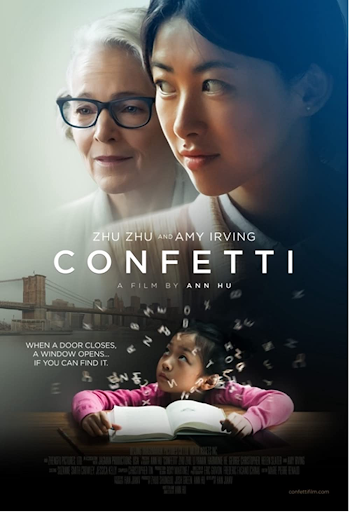
To commemorate Asian American and Pacific Islander Heritage Month, Siena is spotlighting independent film Director Ann Hu. Her most recent film is the partly autobiographical Confetti, which combines issues surrounding dyslexia and immigration with the diverse identities and experiences related to Asian American and Pacific Islander Heritage Month.
Confetti continues the cultural contributions Hu has made through her other films, Shadow Magic (2000) and Beauty Remains (2005). Her work has gotten awards and nominations at film festivals in China, Taiwan, and Japan.
Here’s a short synopsis of Hu’s three films:
- Confetti has a contemporary setting and tells the story of a mother taking her dyslexic daughter from a small town in China to New York in search of a school that meets her learning needs. Based partly on Hu’s own experiences with her daughter Michelle, Confetti shows Meimei in school doing multisensory learning and other methods used in LD classrooms, as well as uses visuals to represent how Meimei sees words and letters.
- Shadow Magic is set in Beijing, China, in 1902 and tells the story of a Chinese photographer and British innovator trying to introduce the modern technology of film into a traditional Chinese society.
- Beauty Remains is set in Qingdao, China, in 1948 and follows the lives of two sisters as they deal with their late father’s will and legacy, as well as a common love interest that complicates their relationship.
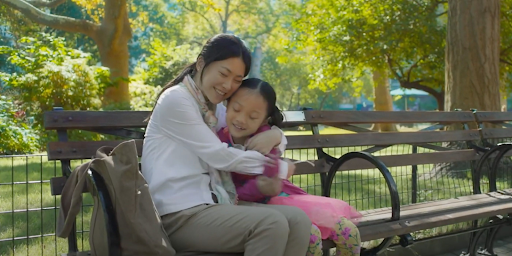
As a 2021 article on the underdiagnosis of learning differences in Asian American community quotes Hu, “Seeing how Michelle struggled in the classroom and struggled to finish her homework after school between 3:00pm and 11:00pm every day was truly a heartbreaking experience for me. Often Michelle would pretend that she understood the question just to help me feel less stressed.”
Learn More About Ann Hu
- See Confetti’s official website and rundown of its cast and crew, as well as its official YouTube channel for related content and interviews.
- Read this profile in Deadline (from 2017) to learn more about Hu’s background, reception of her earlier films, and cultural and creative differences between China and the U.S.
- Listen to Hu on The Filmmakers Podcast discussing Confetti and her overall approach to independent filmmaking.
- Read Hu’s Interview with Medium, “5 Things Parents Can Do To Help Their Children Thrive and Excel In School.”
- See this review of Confetti and interview with Hu in Forbes.
Resources for AAPI Month
The theme for AAPI Heritage Month 2022 is “Advancing Leaders Through Collaboration.” Learn more about AAPI Heritage Month and why it’s in May here.
Hu gave an interview with Women in Hollywood in August 2021 about Confetti’s autobiographical roots, noting “In trying to figure out what to do, I ended up walking a long and hard journey to get to where I am today. In the process, my viewpoint changed, and I became a different person.”
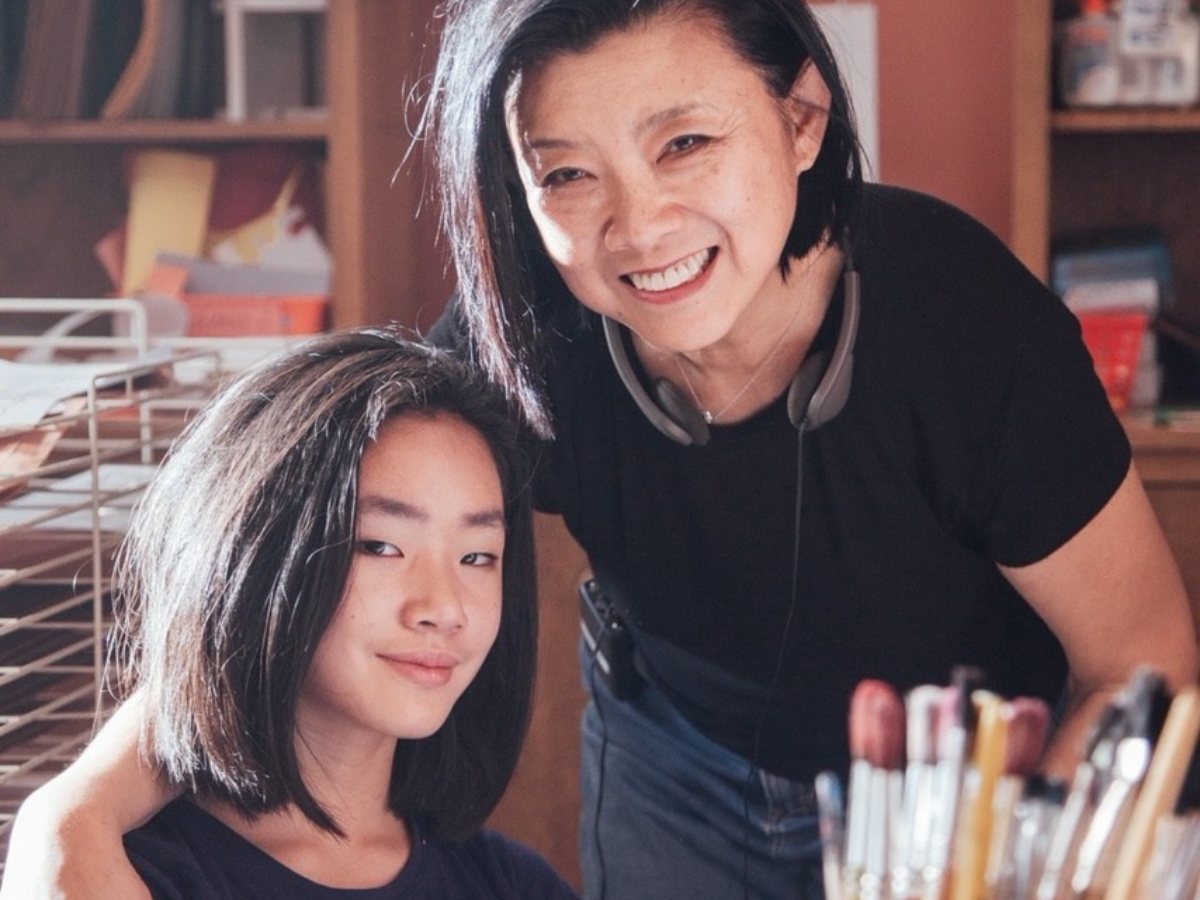
Learn about Siena’s commitments and ongoing initiatives for Diversity, Equity, Inclusion, and Belonging. And, see Siena’s blog for related material, including a spotlight on poet Amanda Gorman from Black History Month and Olympian and activist Meryl Davis from Women’s History Month.
Spotlight on Meryl Davis
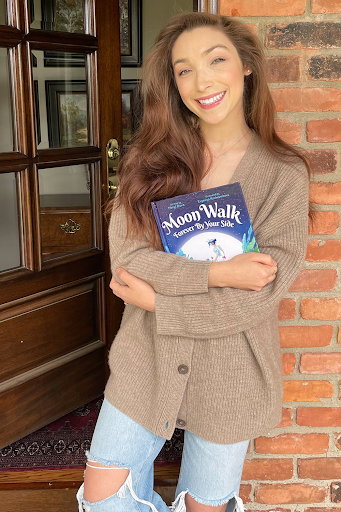
“I learned how I learned and how my brain worked. It helped me adjust and compensate for my differences…. It opened me up to problem solving, seeing things differently, and how I can help myself overcome things.” —Olympian Meryl Davis on her dyslexia
Even before she won Olympic gold in 2014, Meryl Davis knew the importance of advocating for herself and others. A competitive skater and ice dancer since age 5, Davis has used both her public presence and her community dedication to help young people achieve their goals.
As part of Women's History Month this year, Siena is honoring Davis for her successes in inspiring women and girls both on and off the ice, in part through her perseverance in adjusting to her own learning differences.
Davis’s dyslexia diagnosis came in 3rd grade. At first, she felt less-than and inadequate, and she eventually figured out how to learn in her own way, finishing high school as a member of the National Honor Society. She attended the University of Michigan, majoring in Cultural Anthropology (Class of 2020) while also training full-time on the ice rink.
Davis also lacks depth perception and has trouble seeing out of her right eye, which was another adjustment she made successfully. As she did in the classroom, Davis developed accommodations for her vision issues on the ice, such as by memorizing markings on the ice to situate herself when skating and trusting her partner to stay safe and avoid collisions with other skaters.

A profile from the Yale Center for Dyslexia and Creativity quotes Davis on her professional path: “With skating I could feel it more than see it.” Moreover, “I fell in love with it because it made sense to me, partly because I see things differently. I learned to enjoy it, worry free, in terms of moving with the music. It’s been a really beautiful part of my life.”
At the 2014 Winter Olympics in Sochi, Russia, Davis and her partner Charlie White became the first American team to win the gold medal in ice dancing. Davis and White had won medals in other competitions since 2006, and their Olympic victory capped their great run as skating partners. In 2020, they were named to the U.S. Figure Skating Hall of Fame. Learn more here about Davis’s accomplishments on the ice.
.png)
Since winning Olympic gold, Davis has been dedicated to supporting young people and advocating for access to figure skating, education, and social–emotional wellness—particularly in underserved communities. Among her post-Olympics accomplishments are:
- In 2015, she wrote for Team USA about the importance of sports and community advocacy. “[S]port is about the kind of success that brings you one step closer to being the best version of yourself,” she wrote in helping define “success” more broadly than international competitions, medals, or other accolades.
- She’s worked with Classroom Champions, an organization that partners with elite athletes to help children’s academic and social–emotional wellness.
- A Michigan native, Davis is a founding co-chair of the organization Figure Skating in Detroit as well as an ambassador for the Women's Sport Foundation. Figure Skating in Detroit combines figure skating, tutoring, STEM coursework, and leadership training to give Detroit-area girls access to a supportive, mentoring community. “Figure skating is an expensive sport,” notes Davis, who’s part of the program’s leadership committee and a member of its champions committee. “It hasn't been a particularly diverse sport historically, so we focus on giving access to girls of color in the city of Detroit.” (Learn more here about Figure Skating in Detroit.)
- In April 2021, Davis added children’s book author to her professional accomplishments, publishing the picture book Moon Walk: Forever by Your Side, about a parent and a child bonding.
“Patience with oneself is the key to learning how to be your best self in any case. Just because things come differently to you doesn’t make you any less. You have to rely on the people who are there for you.” —Olympian Meryl Davis on using available supports
See Siena’s blog for related material on successful women, including a spotlight on astrophysicist Maggie Aderin-Pocock from Women’s History Month 2021 and one on poet and activist Amanda Gorman from Black History Month 2022.
Fidgets in the Classroom
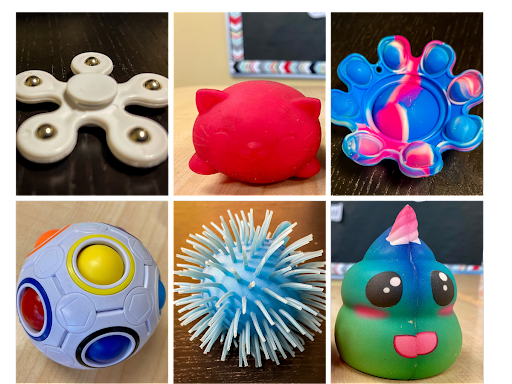
“I like fidgets because I can use them under the desk. I also like them because they give me a bit more focus and I won't be moving around too much.”
—Siena Middle School Student
“It’s always nice to have it nearby. It makes me feel better. It’s comforting.”
—Siena Middle School Student
Pop Its...squeeze balls...infinity cubes: these have come to be known commonly as fidgets, but a generation or so ago, they might’ve been seen as toys for a student to hide or a teacher to confiscate.
Although they can be counterproductive when misused, fidgets can also be highly effective tools for students with ADHD, anxiety, and other difficulties that affect their performance in class.
There’s ample research to support the benefits of fidgets for children and adults, particularly students with ADHD or sensory processing needs. Sydney Zentall, a professor of Educational Studies at Purdue, has written about the importance of multisensory activities accompanying a primary task (such as listening to music while writing a paper). This recent piece in ADDitude draws on Zentall’s work: “Intentional fidgets allow you and your child to self-regulate ADHD symptoms in a controlled, constructive fashion.” (See below for additional reading and resources.)
Siena Middle School Humanities Teacher Meredith Shinners follows this principle of controlled and constructive fidget use in her classes: “I love when students can appropriately use them to calm their bodies and give them some movement in their hands. Students are most successful with a fidget if it is a simple motion back and forth.” Both Shinners and Reading Teacher Leslie Holst strongly prefer fidgets that can be inconspicuous and used under students’ desks—that is, out of sight and out of hearing.
Holst adds an important caveat: “Fidgets are positive and constructive classroom tools only when respecting everyone else’s ability to learn.” So, how can fidgets be both beneficial to students themselves and not detrimental to those around them?
Why Students Use Fidgets
“I like the fidgets because they help keep me occupied and not space out.”
—Siena Middle School Student
When used appropriately as tools of grounding and self-regulation, fidgets such as these can be beneficial:
- Squeeze ball (e.g., an Isoflex grip ball)
- Therapy putty
- Infinity cube
- Fidget cube
- Pop It
- Baby Porcupine Ball
- Fidget jewelry (e.g., rings that double as manipulatives, or beaded bracelets from Old Soul)
- Elastic desk straps like Bouncy Bands
- Fidget stools (see these from Hokki and Kore)
For this elementary student, fidgets make her “de-stressed and calm” in physically redirecting any inner anxiety:
Inspired Treehouse reminds us that “Fidgets provide us with subtle movement and touch input that can help calm our bodies and keep our minds attentive, alert, and focused. Movement [is] a powerful component of focus and problem solving and fidgets provide an outlet for small movements of the hands while we work.”
There are clear benefits of movement for ADHD support in the classroom, including heightened alertness and better information processing. A wobble stool, for example, lets students move some parts of their bodies in a controlled, non-disruptive way (instead of pacing around the room or having to take frequent walks in the halls). Regular movement and multisensory learning are integral to Siena’s approach to teaching, so fidgets in the classroom are often another way to maximize learning and performance.
For students with anxiety, there’s comfort in knowing that their fidgets are there, even if they don’t need to use them for focus when working. One middle schooler made her own squeeze ball (a balloon filled with beads) and finds it “nice to use” for calming and focusing during class. Different textures and colors can additionally help anxious students ground themselves.
Teacher Advice for Fidgets in the Classroom
“For the most part, they use them appropriately to help them focus. We try to limit it to 1 fidget per student so that things don’t get lost in the mix.”
—Shannon Robichaud, Siena Elementary Teacher
Siena teachers understand the benefits and risks of fidget use—such as when it becomes the primary focus instead of the teacher and their lesson. The more that students understand that an infinity cube or fidget stool is a tool to improve focus and assuage anxiety, the more their fidgets won’t become toys to distract them or their classmates from learning. Instead, the tool helps them channel extra energy in productive, classroom-appropriate ways.
When fidgets are used constructively and respectfully in a classroom, they can improve students’ focus, performance, and self-regulation. Shinners suggests that teachers implement clear policies for fidget use and misuse: “Fidgets can’t be a visual or auditory distraction to anyone, so students can use silent fidgets under the desk. We talk a lot about how fidgets become toys if you’re looking at and playing with them, so they get put away.”
There’s an important learning trajectory that Siena students follow from elementary school through middle and high school with regard to fidgets. An elementary or younger middle school student might not realize that while their fidget cube calms them, it can irritate their classmates due to the clicking noise. In both learning how to learn and how to respect others’ learning while at Siena, students gradually develop the higher-level thinking to be aware of how their actions and body movements affect others.
“Students are still learning the socially acceptable ways to maintain their attention or manage their anxiety in the classroom,” Holst notes. “8th graders and high schoolers are generally better at using fidgets to maintain their attention or calm their anxiety. They understand the connection between the object and how it makes them feel.”
Resources for Fidgets in the Classroom
25 Best Fidget Toys and Devices For a More-Focused Classroom (2021)
ADHD Fidgeting Builds Focus: Body-Brain Connections (2021)
ADHD Fidgeting Strategies That Promote Focus (2021)
The Guide To Introducing Fidgets To The Classroom (2021)
Fidgets are Tools, Not Toys (2019)
17 Ways to Help Students With ADHD Concentrate (2018)
How to Introduce Fidget Toys in the Classroom (2017)
Teacher Tip: The Dos and Don’ts of Fidgets for Kids (2016)
10 Solutions for Students Who Fidget in the Classroom (2015)
Dyslexia Advocacy and Accommodations
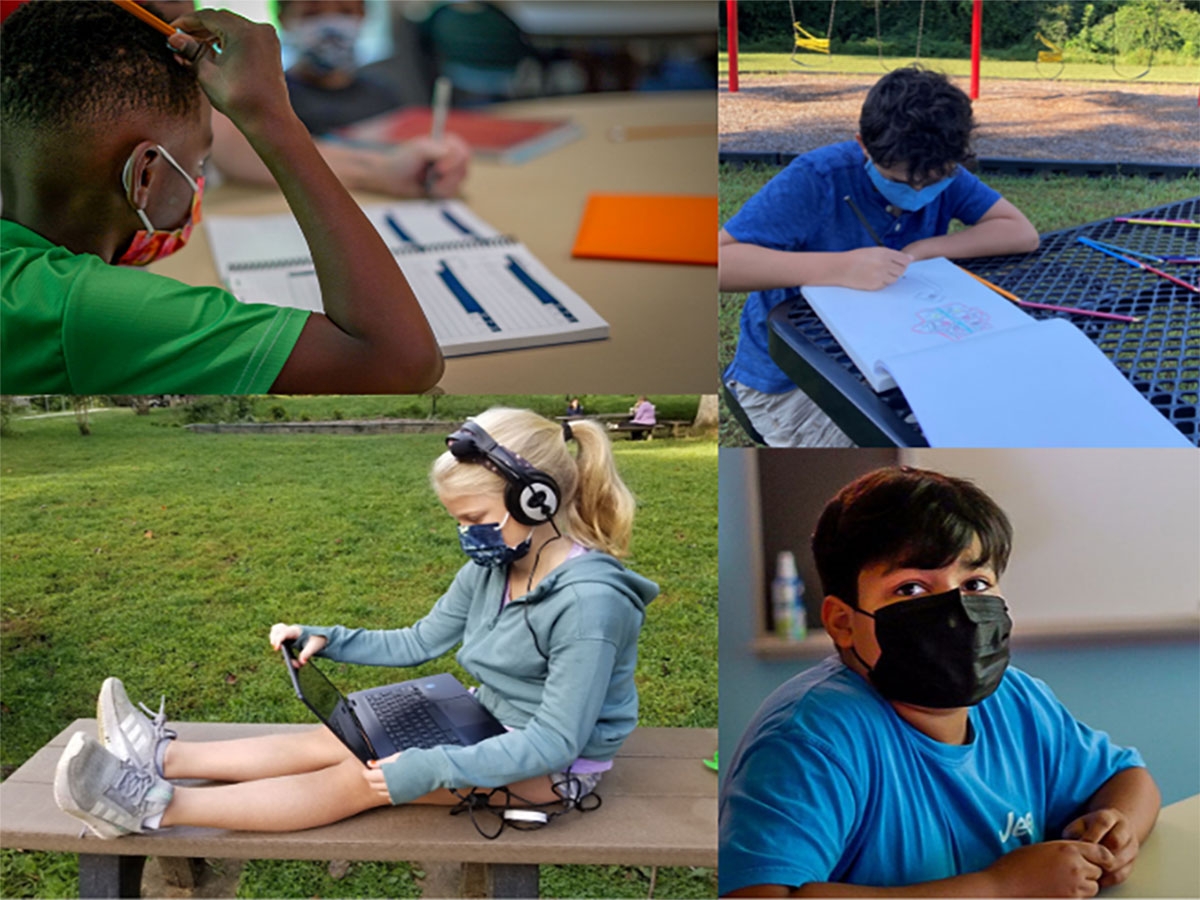
“I have a planner that I use. I still use my Siena color-coding skills. That has really been pushing me through all of my years—both at Siena and at college.” —Siena Alumnus
How do Siena students learn the skills necessary for them to succeed both at Siena and in college?
Through accommodations, through adaptation, and through self-advocacy each and every day.
Since October is Dyslexia Awareness Month, it’s the perfect time to reflect on the strategies that Siena regularly adopts to support our students’ different learning styles. At both our Silver Spring and Northern Virginia campuses, students have ample opportunities to self-advocate and seek the accommodations that best meet their individual needs.
Advocates and Advocacy at Siena
Advocacy and adaptation on students’ behalf is central to what Siena does every day:
- Students self-advocate by understanding their personal learning methods and needs, as well as by working with their teachers to succeed and, if necessary, make adjustments.
- Teachers advocate by having an open line of communication with students and parents and sharing what they’re noticing at school (both academically and socially–emotionally).
- Parents advocate by both promoting student self-advocacy at home and staying in contact with teachers about their students’ progress and needs.
From the beginning, Siena students are introduced to their accommodations and the reasons we use them. The students also trial different classroom supports and learn what works best, among them:
- flexible seating options (e.g., a standing desk)
- color strips
- fidgets (to help them focus)
- different pencil grips
- color-coding (good for particularly visual learners)
Siena students learn how to be active advocates, from requesting feedback on written assignments early in the process or seeking extra guidance to having a teacher act as a scribe to help them get their thoughts on paper.
The elementary team uses sentence starters to guide students if they need extra help or clarification during class. These are posted in the classroom as a visual reminder of how students can best ask for what they need.
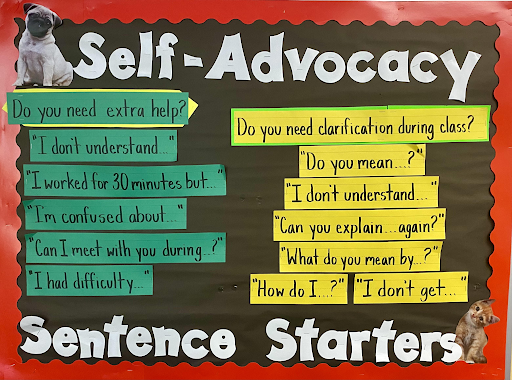
As students move through Siena’s academic grade divisions, they gradually become more independent in handling their assignments, deadlines, and overall learning conditions.
The advocacy lessons don’t stop when students graduate. A Siena alumnus who’s now a senior in college has learned the importance of talking with his professors and other support staff about accommodations because of how he was taught and practiced using them while attending Siena: “Get out there, talk to your professors, and be yourself,” he shared. “That’s how you can succeed.”
Resources Used in Siena Classes
In tandem with regular student-centered advocacy, Siena encourages students to use appropriate methods and resources to enhance their learning. For example, the Siena Planner helps students with organizing and executive functioning. It has both immediate and long-term benefits: it helps students learn how to regulate their homework and study schedules, as well as provides a tool to bring with them when they graduate.
“I still use a planner [in college]. It’s not exactly like Siena’s but it has everything in it. My planner is my life. Color-coding is huge.” —Siena Alumnus
In addition to print and physical accommodations, assistive technology is integrated into students’ daily lives, through such tools and resources as:
- Individual, school-issued Chromebooks (including a suite of Chrome extensions like Mercury Reader, Speech to Text, and Read & Write)
- Learning Ally
- Mindomo
There are also class-specific resources for math, reading, and other subjects. (See how our math team has adapted the curriculum to help students with dyscalculia.)
Additional Resources for Students and Families
Siena sets students up for success both in their time here and in their lives after by equipping them with useful tools and a willingness to self-advocate. In the process, students learn the skills they need outside the content-area knowledge they get in class:
Such a student-centered approach to learning helps Siena students maximize their potential for success—both as students and as alumni.
Visit our website to learn more about Siena’s individualized instruction and emphasis on self-advocacy and executive functioning. And, see our previous blog post for links to resources in the DC Metro area, including WISER and Decoding Dyslexia Maryland.
Embrace the New Norm
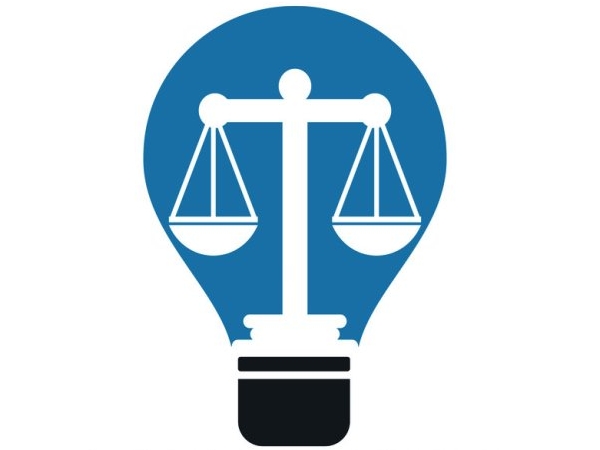
And then the tears began.
Unfortunately for this parent, this was not an unexpected response to a question about her child’s school day. She had been advocating for accommodations for her child’s struggles, but each year, the concerns were dismissed, and each year, the gap in reading ability became wider. The teachers were kind, well-meaning, and dedicated; unfortunately, they were also misinformed:
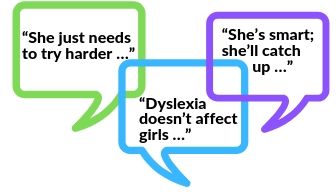
Sadly, this is not an uncommon occurrence, and it’s not about effort, intellect, or gender. Neuroscience teaches us otherwise.
Our expanding understanding of dyslexia, a specific learning disability, and its neurobiological origins is helping to develop appropriate interventions. With science informing practice, our ability to respond to reading difficulties is advancing, and evidence-based interventions can now be implemented. Learn more from leading dyslexia expert, Dr. Guinevere Eden, by viewing Understood.org’s video Dyslexia and the Brain and reading the International Dyslexia Association’s article Compensatory Skills and Dyslexia: What Does the Science Say?
According to recent surveys conducted by the Pew Research Center, almost 90% of teens feel under pressure to achieve good grades. With the detrimental effect of stress on learning, the best educational practice is to reduce stress by removing barriers so that every child may engage in their education. If a child without a learning disability is stressed, imagine how a child with dyslexia feels as they struggle to keep up with literacy requirements.
As reported by the National Center for Education Statistics, the majority of children (approximately a third) served under the Individuals with Disabilities Education Act (IDEA) are diagnosed with a specific learning disability, defined as “a disorder in one or more of the basic psychological processes involved in understanding or using language, spoken or written ...” Furthermore, according to the International Dyslexia Association, possibly 15-20% of the population exhibit some symptoms of dyslexia.
So what does this mean? It means that there is probably a student with dyslexia, diagnosed or not, in every classroom. As such, let’s ensure that opportunities for equitable learning are available for every child. Let’s not wait for mandated support but make it the norm to provide access to tools and strategies commonly considered accommodations.
Technology provides opportunities to seamlessly integrate tools such as speech-to-text into everyday life. Pause a moment and think about how many times a day you say “Hey Google,” “Hey Siri,” or “Alexa.” Is this an accommodation or just the new norm?
Recently downloaded an audiobook? Take time to brainstorm and plan your ideas? Are these accommodations or just the new norm?
As adults, we use ‘accommodations’ throughout our daily lives, so shouldn’t we be providing the same opportunities for our children?
Let’s explore some options further:
 Speech-to-text (dictation) provides students with an opportunity to write without being concerned about spelling. By speaking into a device, children may use more sophisticated vocabulary and progress faster because the mechanics of writing do not hamper them. The good news? Speech-to-text is built in and available for free through a variety of devices, such as laptops, iPads, and cell phones.
Speech-to-text (dictation) provides students with an opportunity to write without being concerned about spelling. By speaking into a device, children may use more sophisticated vocabulary and progress faster because the mechanics of writing do not hamper them. The good news? Speech-to-text is built in and available for free through a variety of devices, such as laptops, iPads, and cell phones.
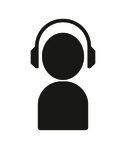 Audiobooks and text-to-speech provide opportunities to access high-level, complex text without being disadvantaged by one’s independent reading level. Ear reading allows a child’s intellect and curiosity to drive book choice, not reading ability. Schools and families of children with documented print disabilities may subscribe to Learning Ally and have access to over 80,000 human-read audiobooks, with many also synched to text. Other fee-based options include Audible, Google Play Books, and Apple Books. However, access is also available at no cost through apps like Libby that provide free access through the library to audiobooks and ebooks. Furthermore, Bookshare offers free ebook access for U.S. students with qualifying reading disabilities.
Audiobooks and text-to-speech provide opportunities to access high-level, complex text without being disadvantaged by one’s independent reading level. Ear reading allows a child’s intellect and curiosity to drive book choice, not reading ability. Schools and families of children with documented print disabilities may subscribe to Learning Ally and have access to over 80,000 human-read audiobooks, with many also synched to text. Other fee-based options include Audible, Google Play Books, and Apple Books. However, access is also available at no cost through apps like Libby that provide free access through the library to audiobooks and ebooks. Furthermore, Bookshare offers free ebook access for U.S. students with qualifying reading disabilities.
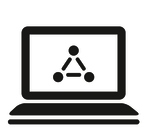 Mind maps and other graphic organizers help students organize their ideas through visual tools. Another way to remove barriers to learning, graphic organizers are beneficial to all students as a system for approaching multi-step tasks and can support reading comprehension, writing, and study skills across all subject areas. Free templates are readily available online.
Mind maps and other graphic organizers help students organize their ideas through visual tools. Another way to remove barriers to learning, graphic organizers are beneficial to all students as a system for approaching multi-step tasks and can support reading comprehension, writing, and study skills across all subject areas. Free templates are readily available online.
The adage that equity and equality are not the same continues to hold. For those with dyslexia, embedded accommodations that are available to all learners can remove the stigma associated with reading difficulties. Imagine a classroom where every child’s educational experience is optimized, a learning environment that provides a range of tools not only to assist the learning of those with documented learning differences but to help all students. Let’s remove barriers to learning and replace the word accommodation with options or choice.
Isn’t it the new norm anyway?
Dyslexia Awareness Month
October is Dyslexia Awareness month! 1 in 5 students have a learning difference like dyslexia, and there are several organizations who are serving and helping this growing population. Read below to find some resources specific to the D.C., Maryland, and Virginia region.
 Decoding Dyslexia, Maryland, is a grassroots movement driven by Maryland families who are concerned with limited access to educational interventions for dyslexia and other language-based learning disabilities in Maryland public schools. Their mission is to raise dyslexia awareness, to empower others to support struggling readers with dyslexia, and to inform policy-makers on best practices to identify, educate, and support students. There are chapters all across the US; you can find your local chapter here. The Montgomery County Chapter of Decoding Dyslexia meets at The Siena School every month! They provide numerous resources for parents and teachers on their website.
Decoding Dyslexia, Maryland, is a grassroots movement driven by Maryland families who are concerned with limited access to educational interventions for dyslexia and other language-based learning disabilities in Maryland public schools. Their mission is to raise dyslexia awareness, to empower others to support struggling readers with dyslexia, and to inform policy-makers on best practices to identify, educate, and support students. There are chapters all across the US; you can find your local chapter here. The Montgomery County Chapter of Decoding Dyslexia meets at The Siena School every month! They provide numerous resources for parents and teachers on their website.
![]() Microsoft is hosting free trainings at their store for local stores for students with dyslexia. Their software helps students read and write. Access articles on their training, learning tools and One Note.
Microsoft is hosting free trainings at their store for local stores for students with dyslexia. Their software helps students read and write. Access articles on their training, learning tools and One Note.
 The DC Capital Area Branch of the International Dyslexia Association (DCIDA) serves dyslexic individuals, their families, the local community of educators and interventionists, and education policymakers.
The DC Capital Area Branch of the International Dyslexia Association (DCIDA) serves dyslexic individuals, their families, the local community of educators and interventionists, and education policymakers.
 WISER (Washington Independent Services for Educational Resources) is another area resource for students with learning differences. Their goals are to improve educational services and promote child advocacy by providing comprehensive resources to children and parents in the DMV area. They are the foremost referral resource for parents and professionals. Some services they provide include testing, tutoring, speech therapy, language therapy, and occupational therapy. They maintain member blogs, speaking events, and publications, which you may access through their website.
WISER (Washington Independent Services for Educational Resources) is another area resource for students with learning differences. Their goals are to improve educational services and promote child advocacy by providing comprehensive resources to children and parents in the DMV area. They are the foremost referral resource for parents and professionals. Some services they provide include testing, tutoring, speech therapy, language therapy, and occupational therapy. They maintain member blogs, speaking events, and publications, which you may access through their website.
 The Learning Disabilities Association of Montgomery County (LDAMC)’s mission is to promote awareness and provide support to maximize the quality of life for individuals and families affected by learning and other disabilities. provides resources for students who have learning disabilities. Access a list of their resources here.
The Learning Disabilities Association of Montgomery County (LDAMC)’s mission is to promote awareness and provide support to maximize the quality of life for individuals and families affected by learning and other disabilities. provides resources for students who have learning disabilities. Access a list of their resources here.
 The Exceptional Schools Fair showcases schools and programs that ensure every child receives an exceptional education. With offerings that range from private day schools to therapeutic services, they aim to equip families and educators with the supports and interventions students need to succeed. This FREE public event is on Sunday, November 17, 2019 from 11am-2pm at the Katzen Arts Center at American University. Visit their website to see the list of schools in attendance. The Siena School, who prepares bright, college-bound students with language-based learning differences, such as dyslexia, to become confident, curious learners who understand their personal strengths and gain the tools and strategies to excel, will be attending the Exceptional Schools Fair, so make sure to stop by the table and say hello!
The Exceptional Schools Fair showcases schools and programs that ensure every child receives an exceptional education. With offerings that range from private day schools to therapeutic services, they aim to equip families and educators with the supports and interventions students need to succeed. This FREE public event is on Sunday, November 17, 2019 from 11am-2pm at the Katzen Arts Center at American University. Visit their website to see the list of schools in attendance. The Siena School, who prepares bright, college-bound students with language-based learning differences, such as dyslexia, to become confident, curious learners who understand their personal strengths and gain the tools and strategies to excel, will be attending the Exceptional Schools Fair, so make sure to stop by the table and say hello!

I couldn't agree more. Within a classroom, children with learning needs should be able to have the independence to learn the way that is best for them. That means providing the accommodations that are needed. However, teachers also need to be educated in what is best for these children or all children.
What wonderful word use....is it an accommodation or just the new norm? For many years we have argued that there are many channels through which to learn and many ways to represent knowledge - all with the goal of creating a skillful learner with agency. Technology is providing us with some new tools and shifting the larger social context of this argument! Thank you!